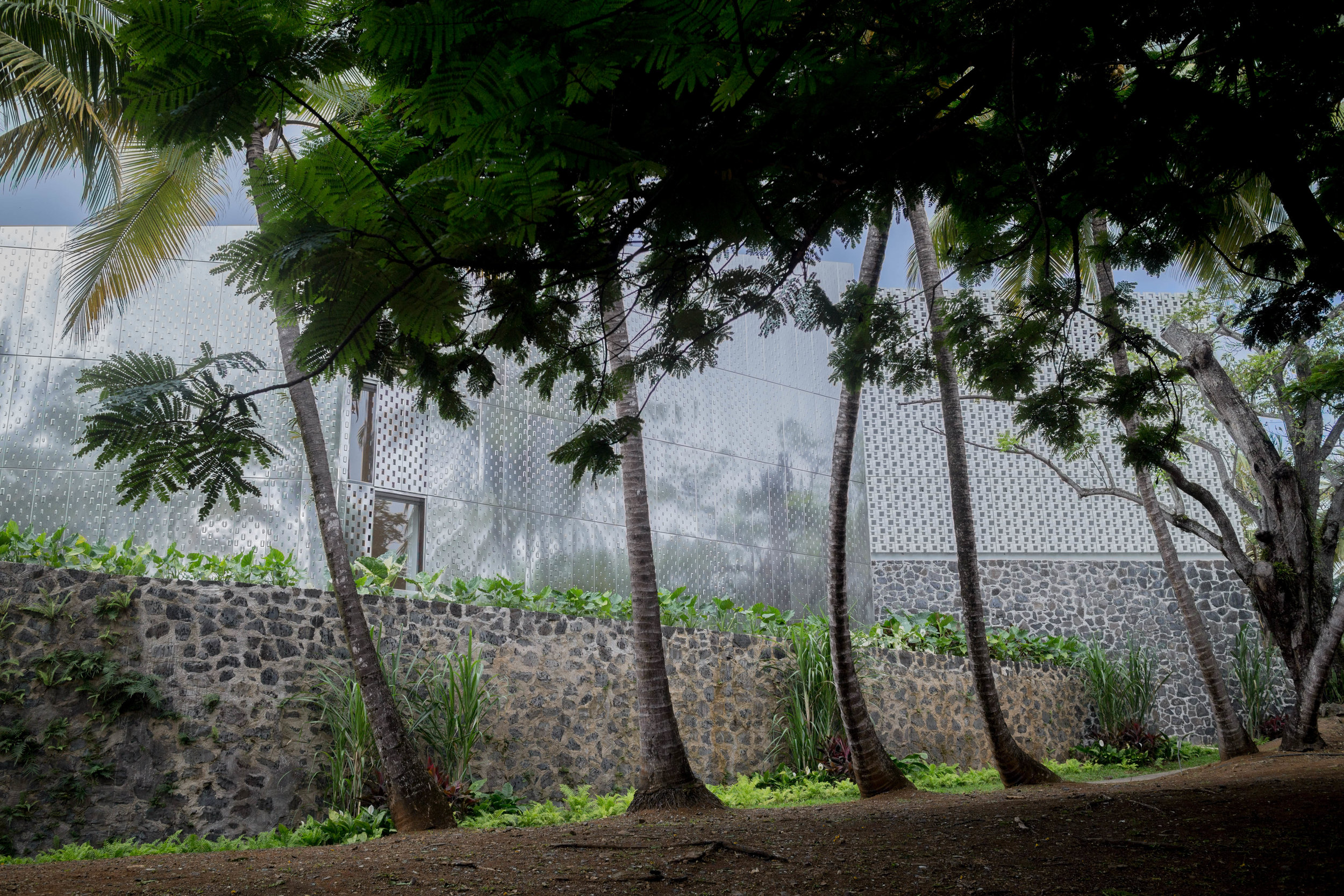
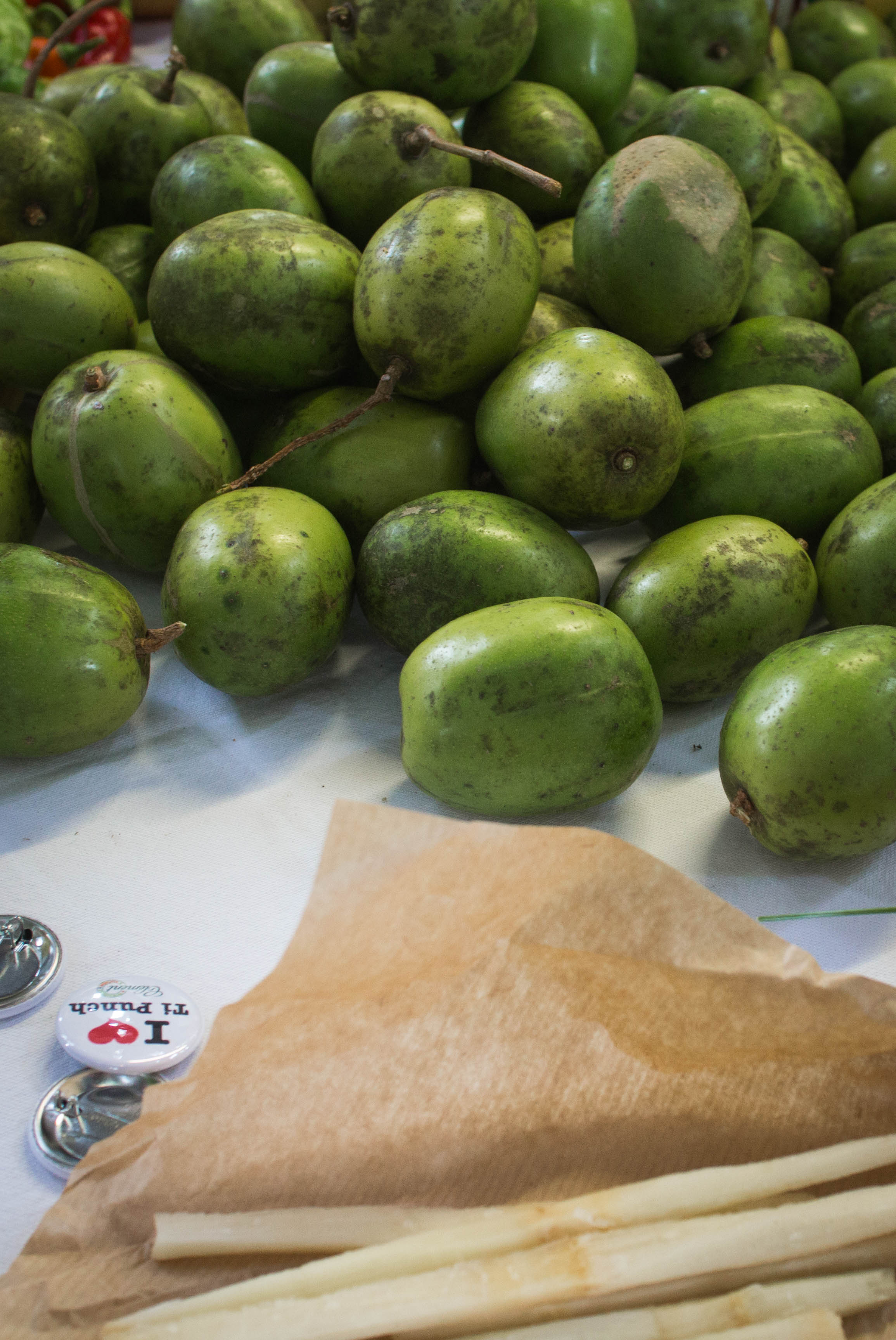
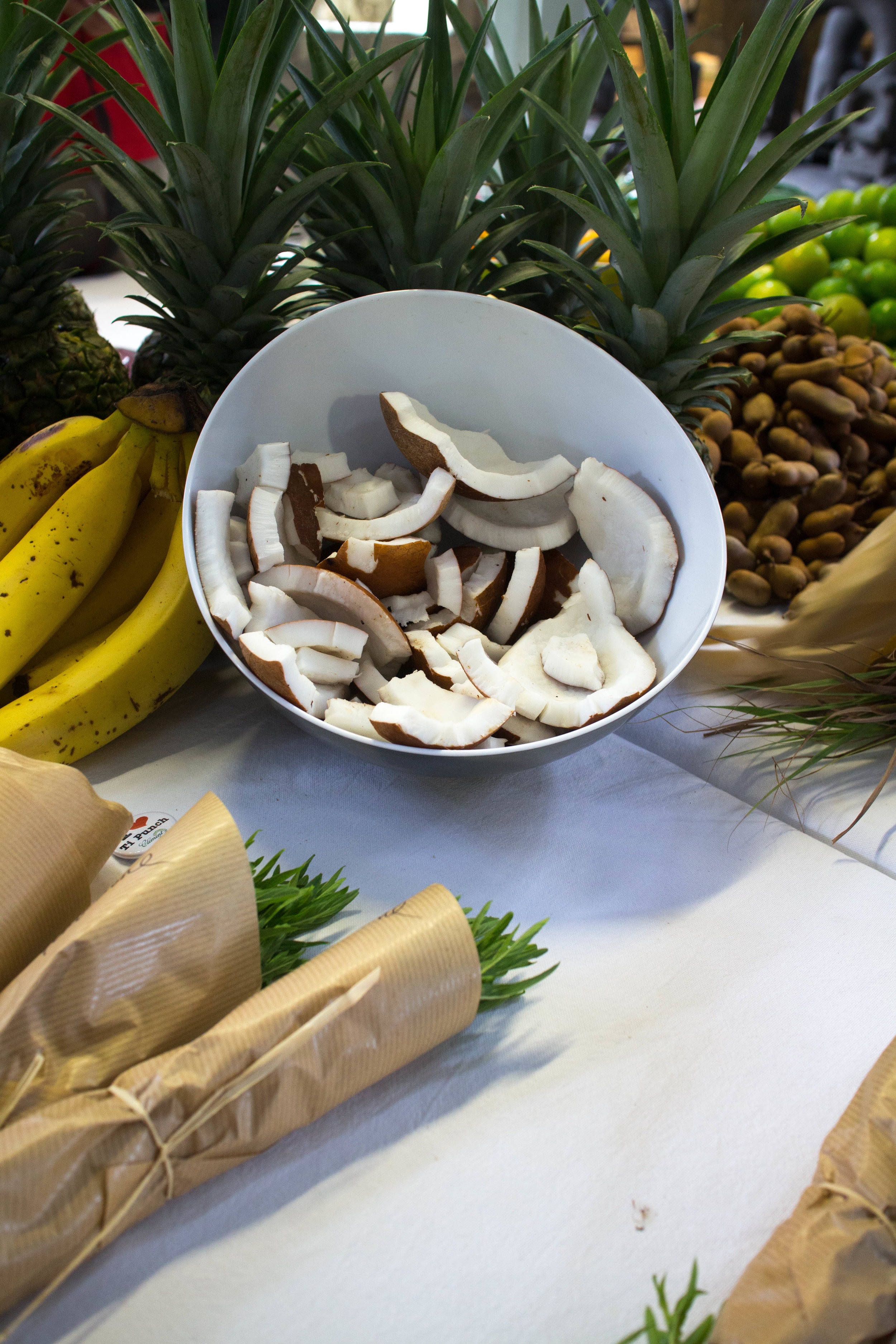
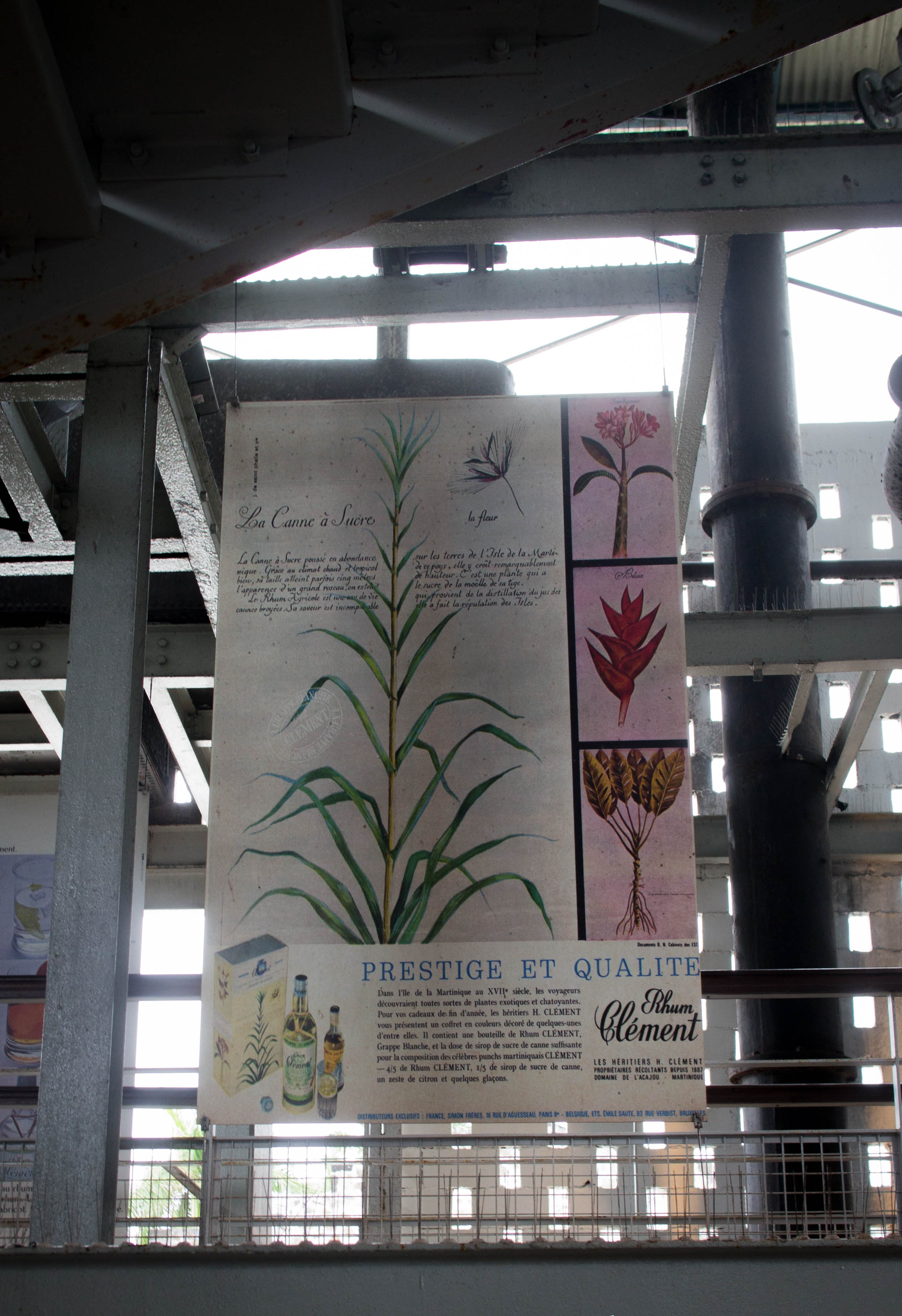
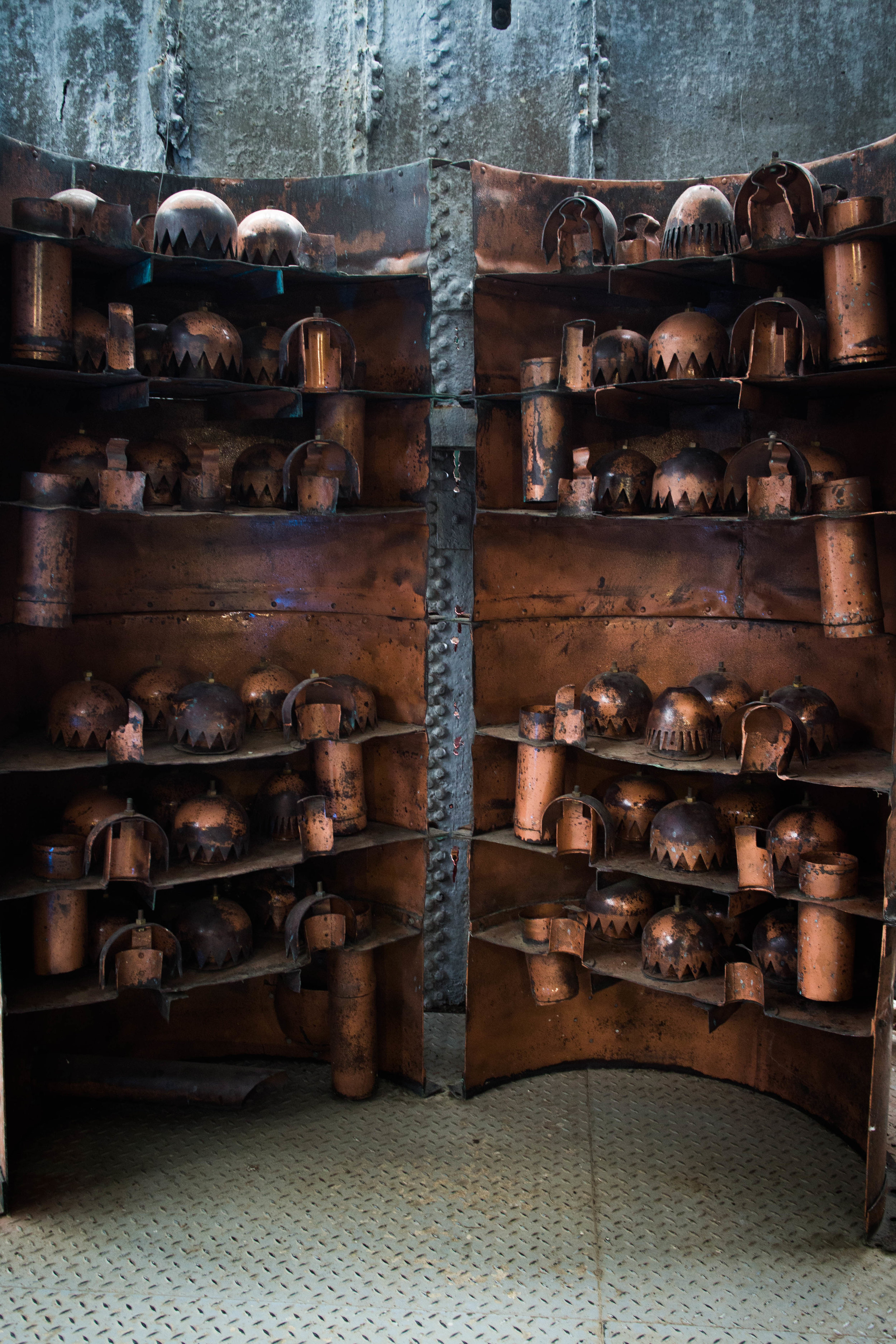
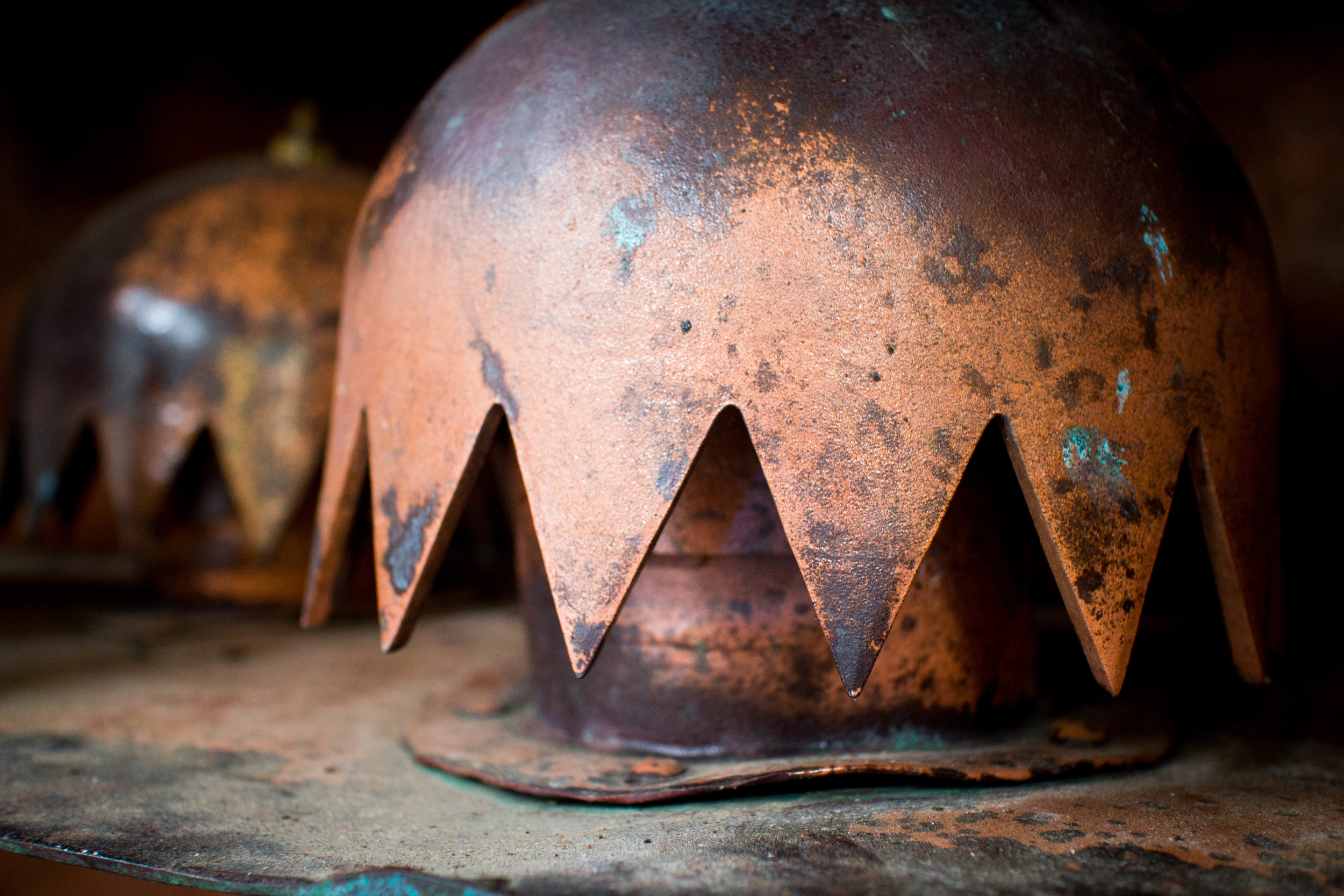
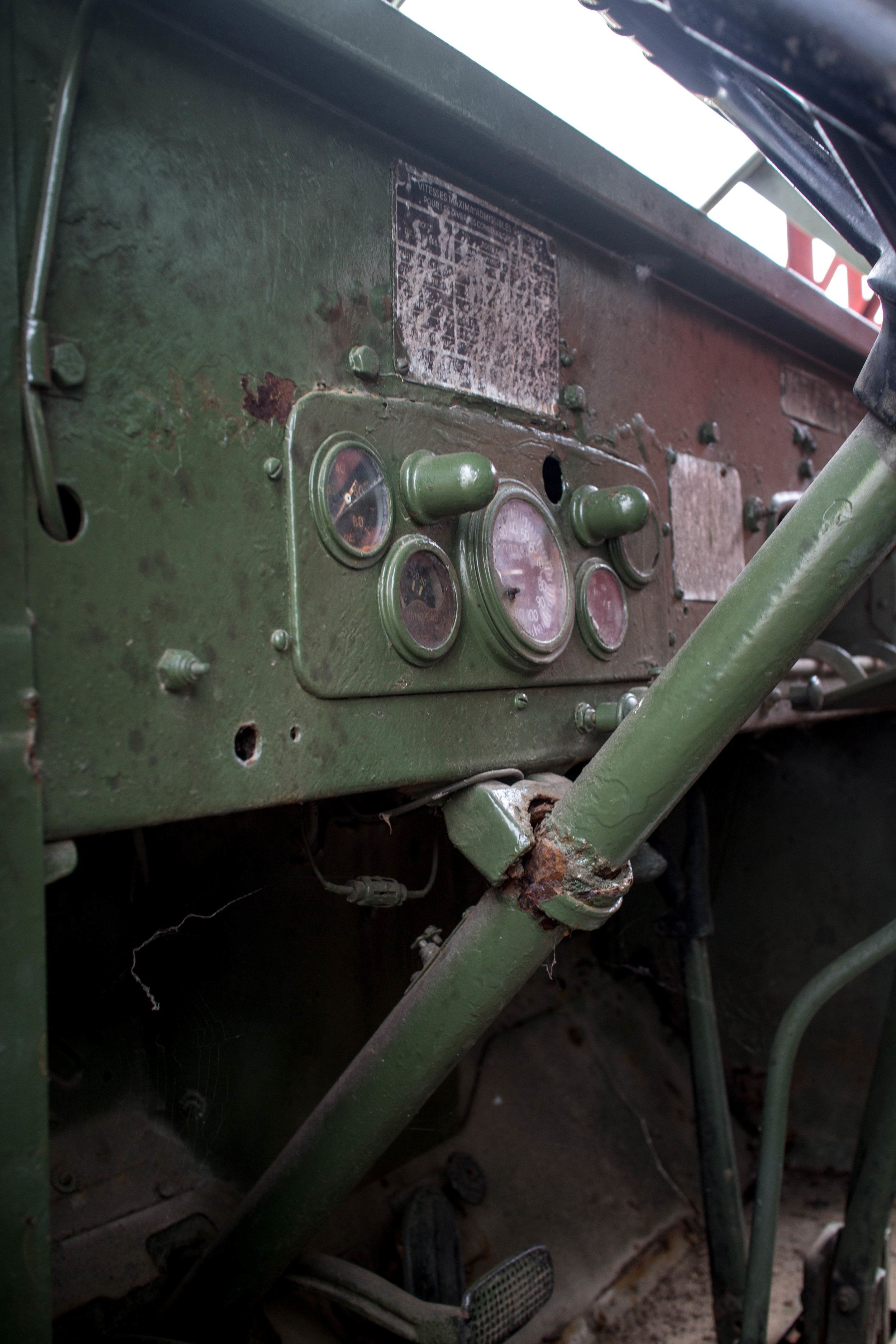
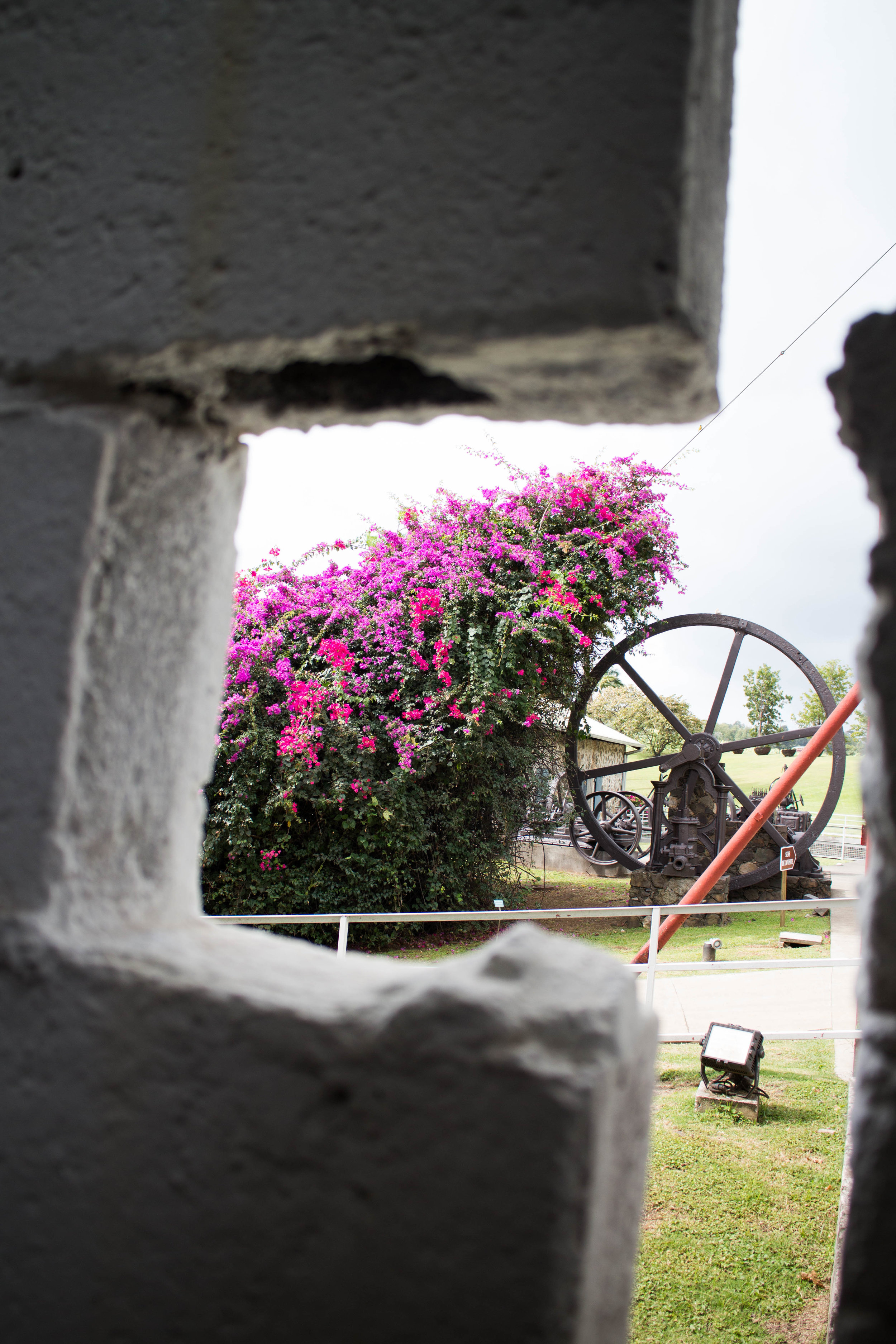
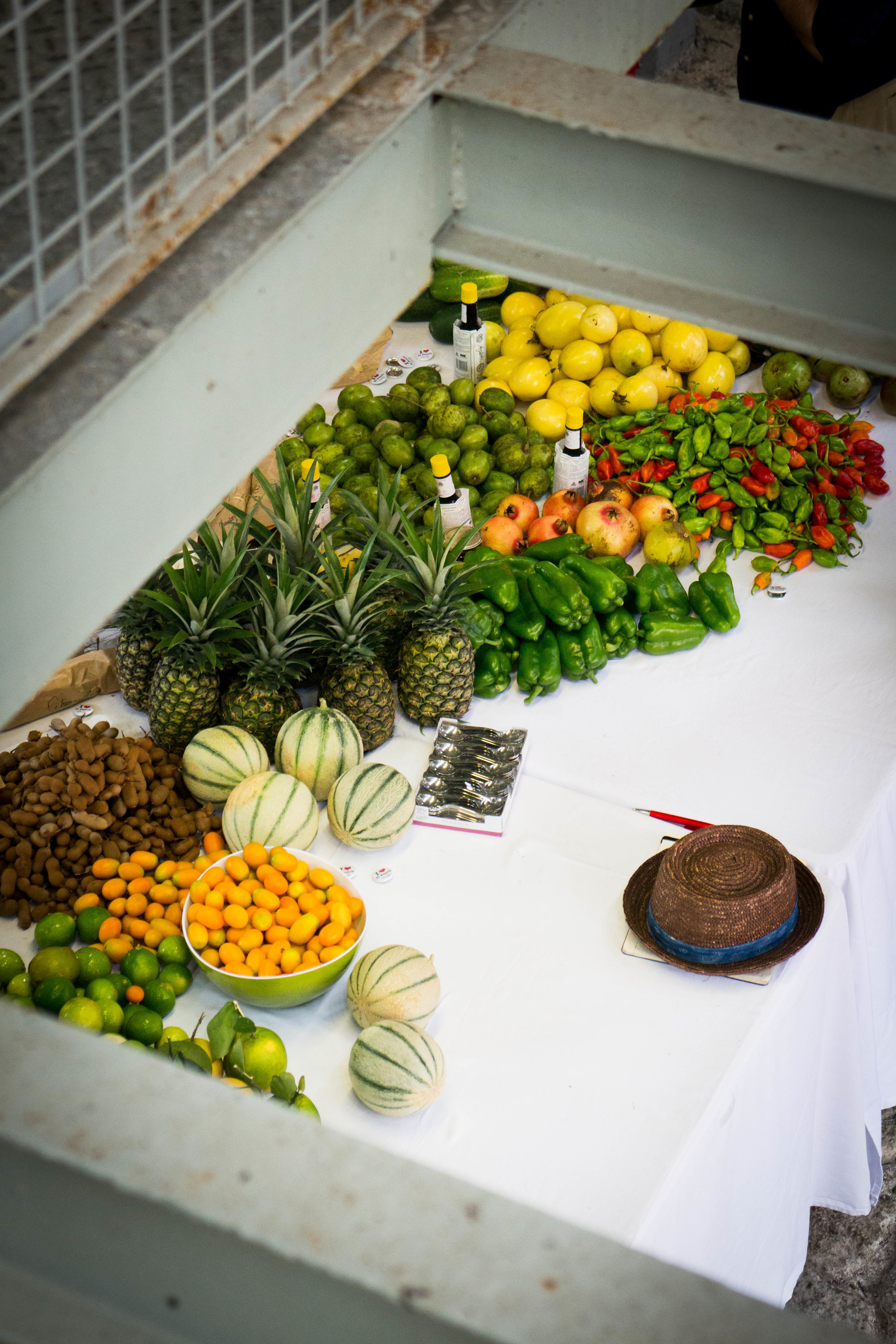
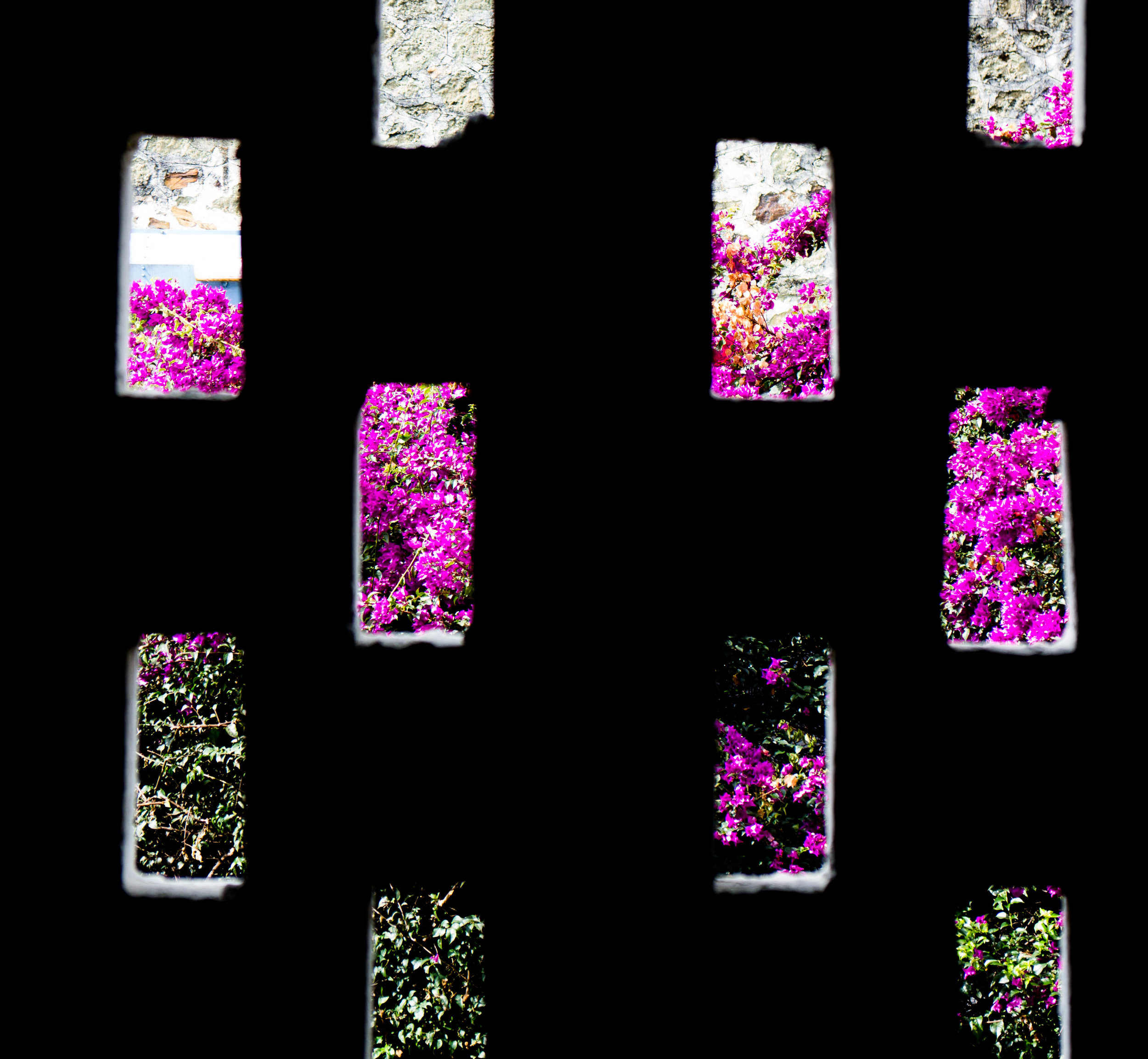
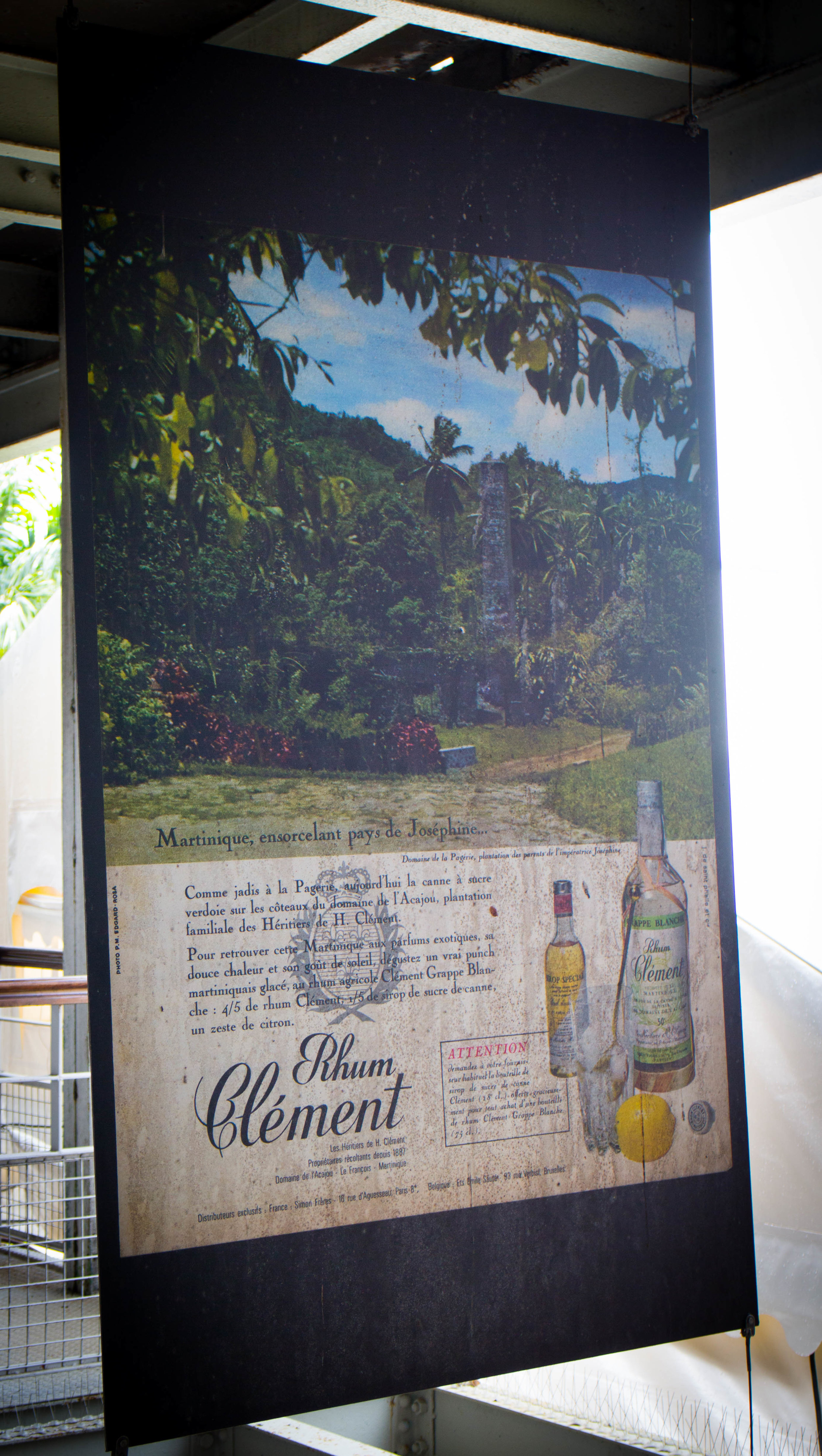
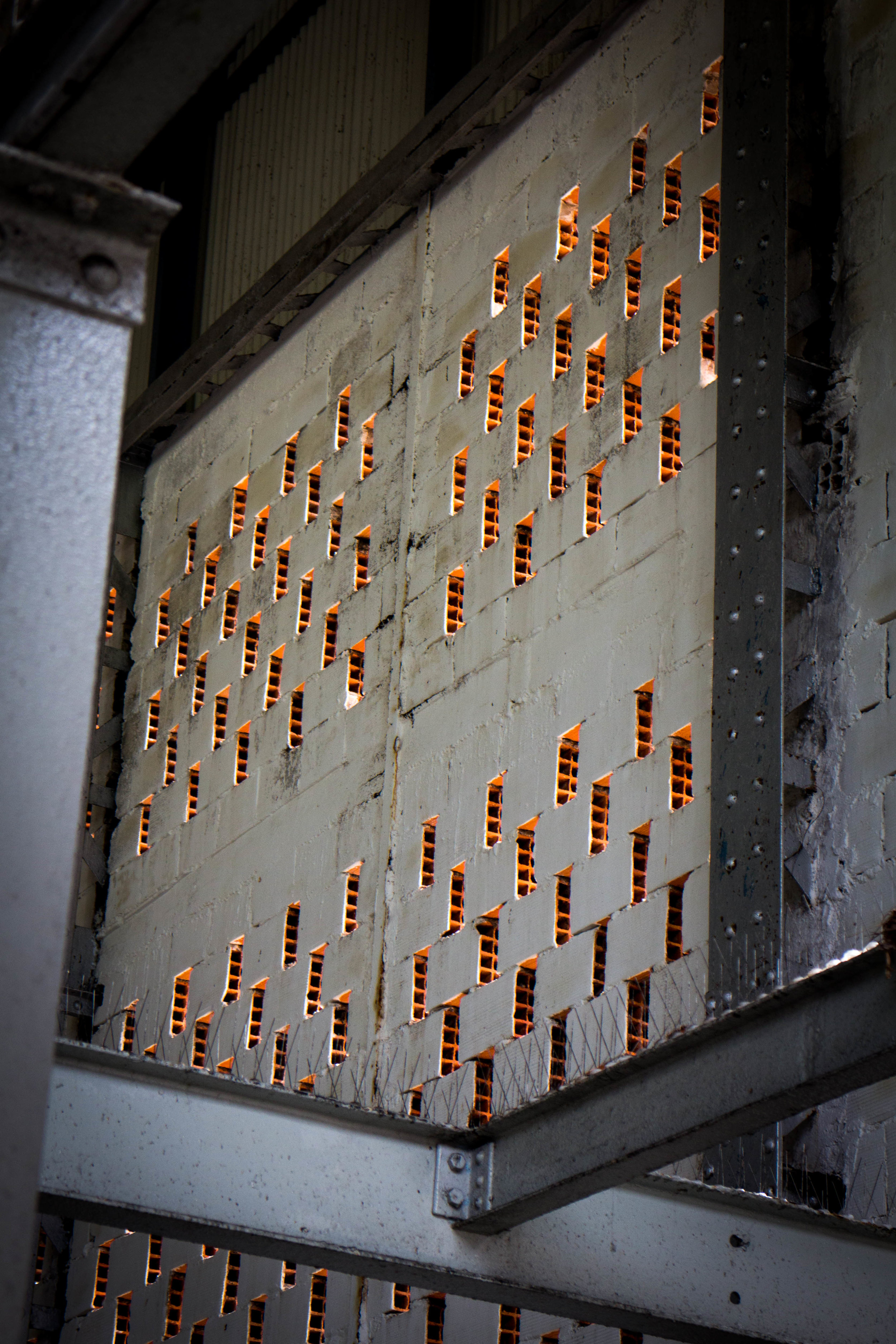
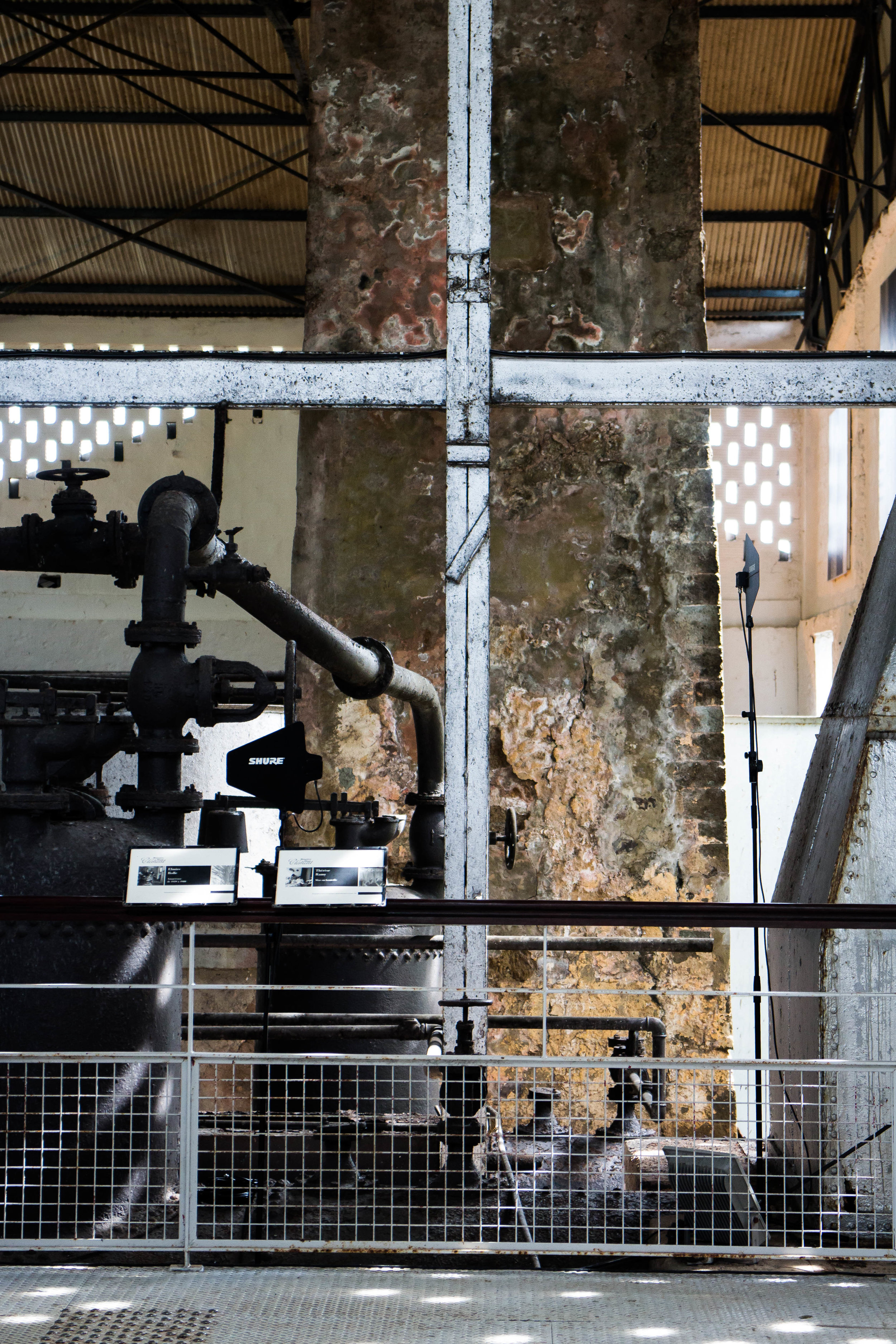

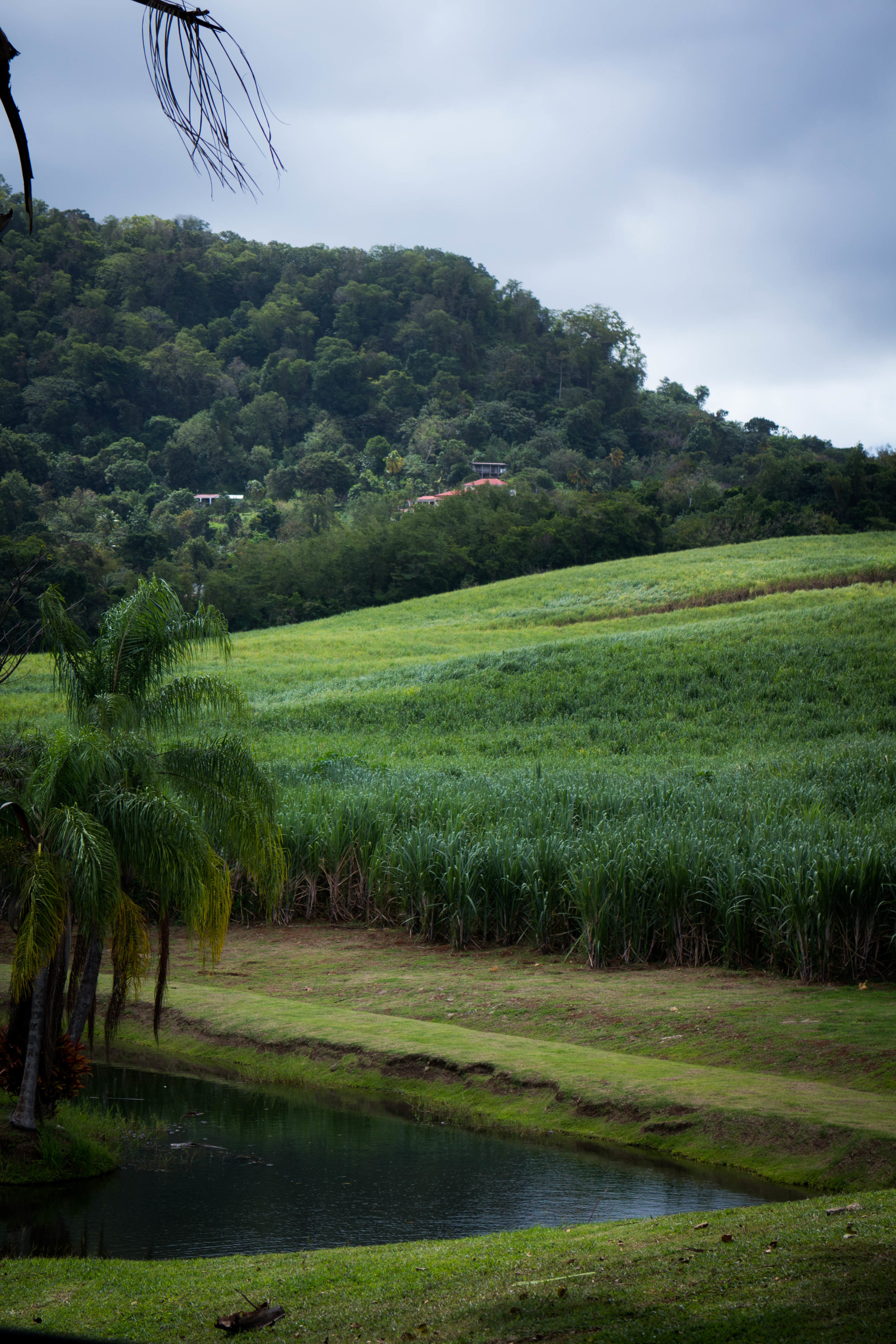

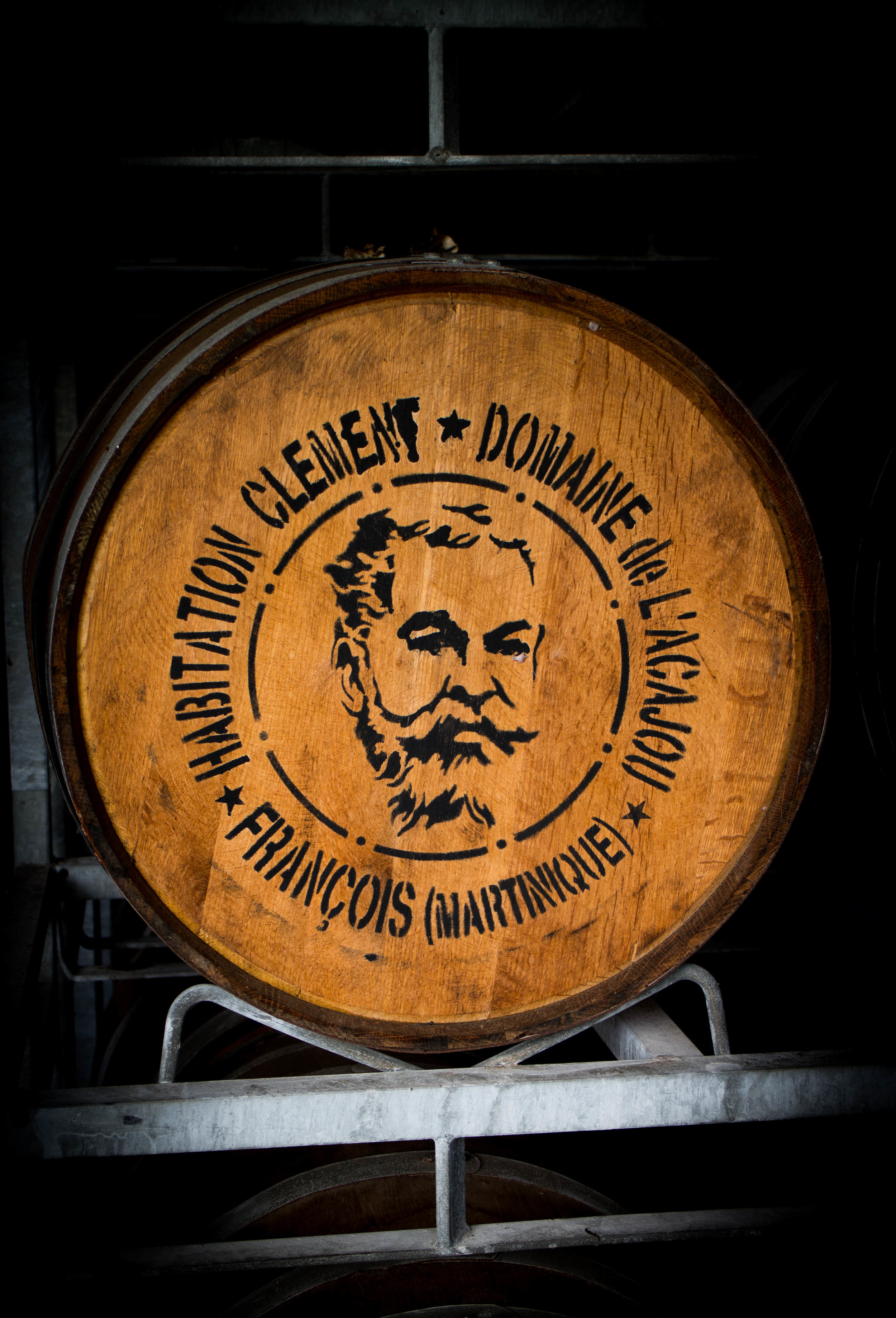
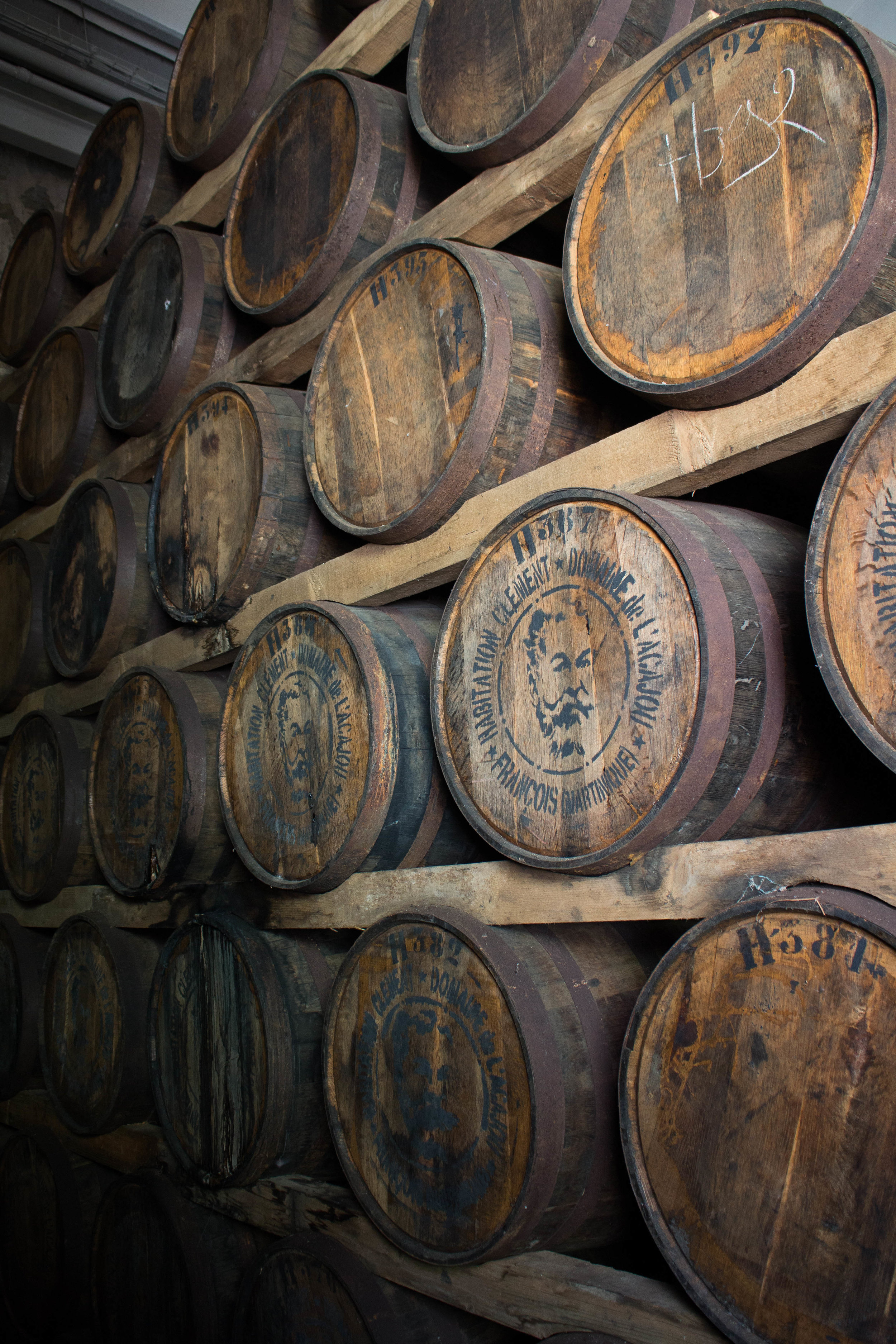
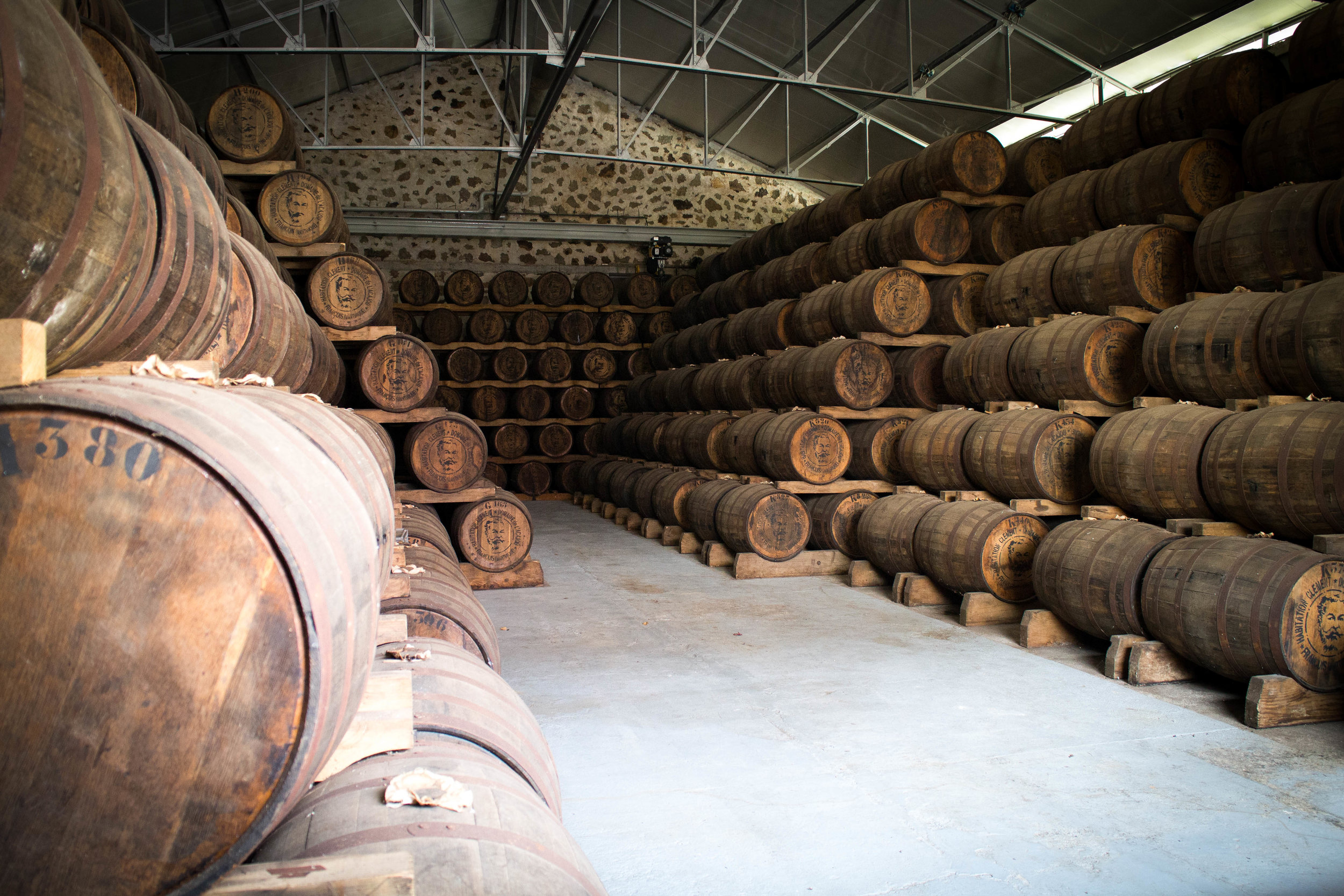
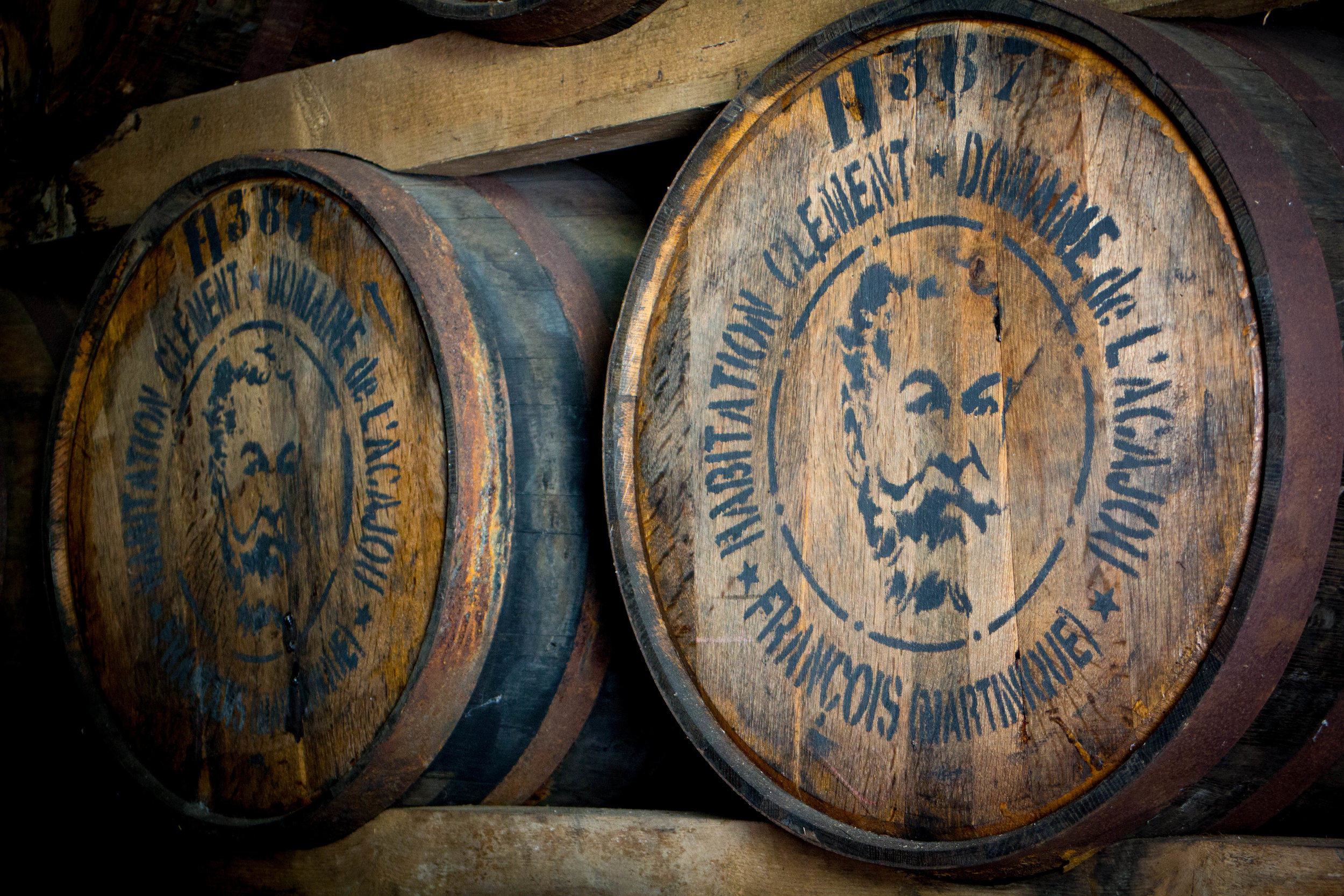
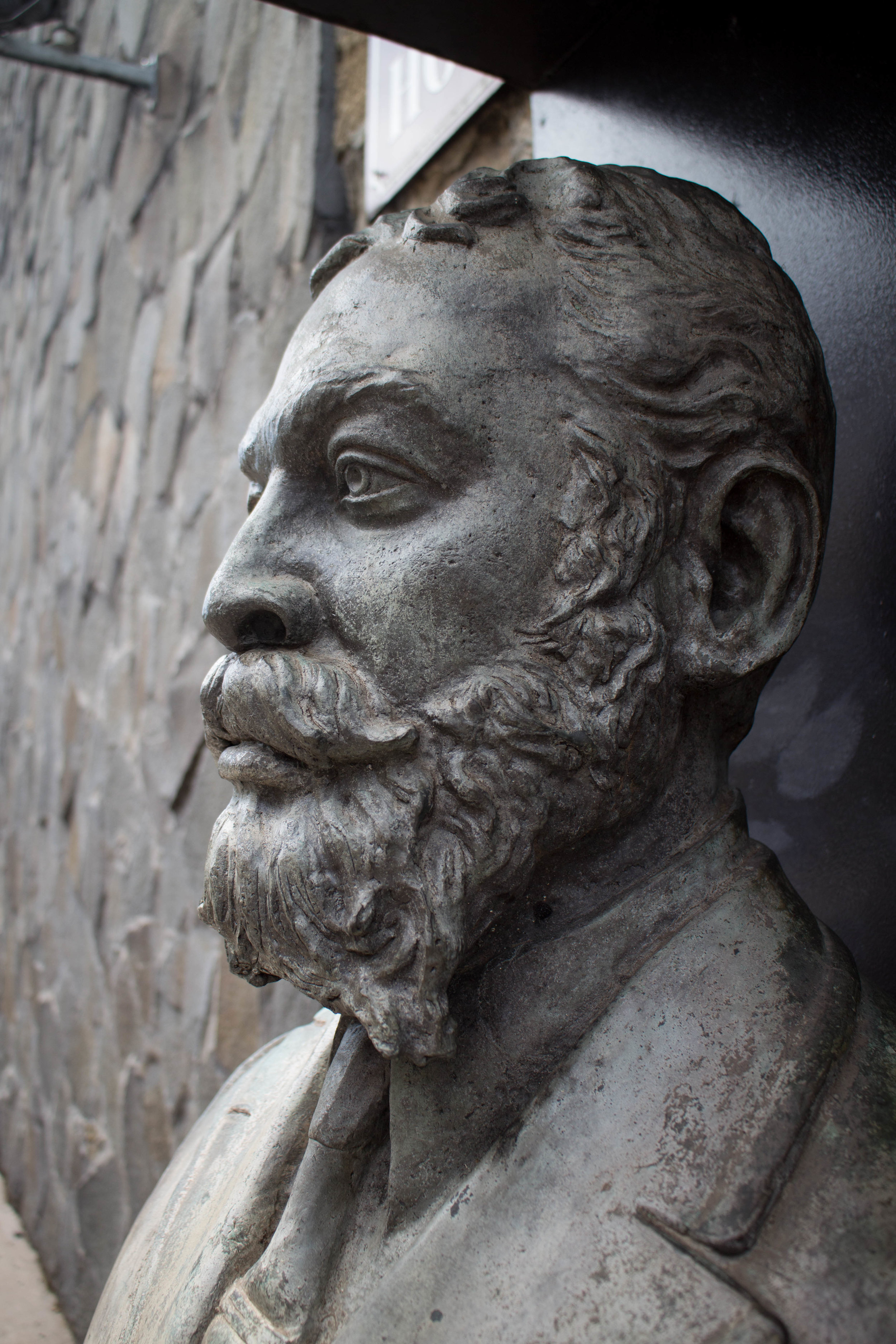
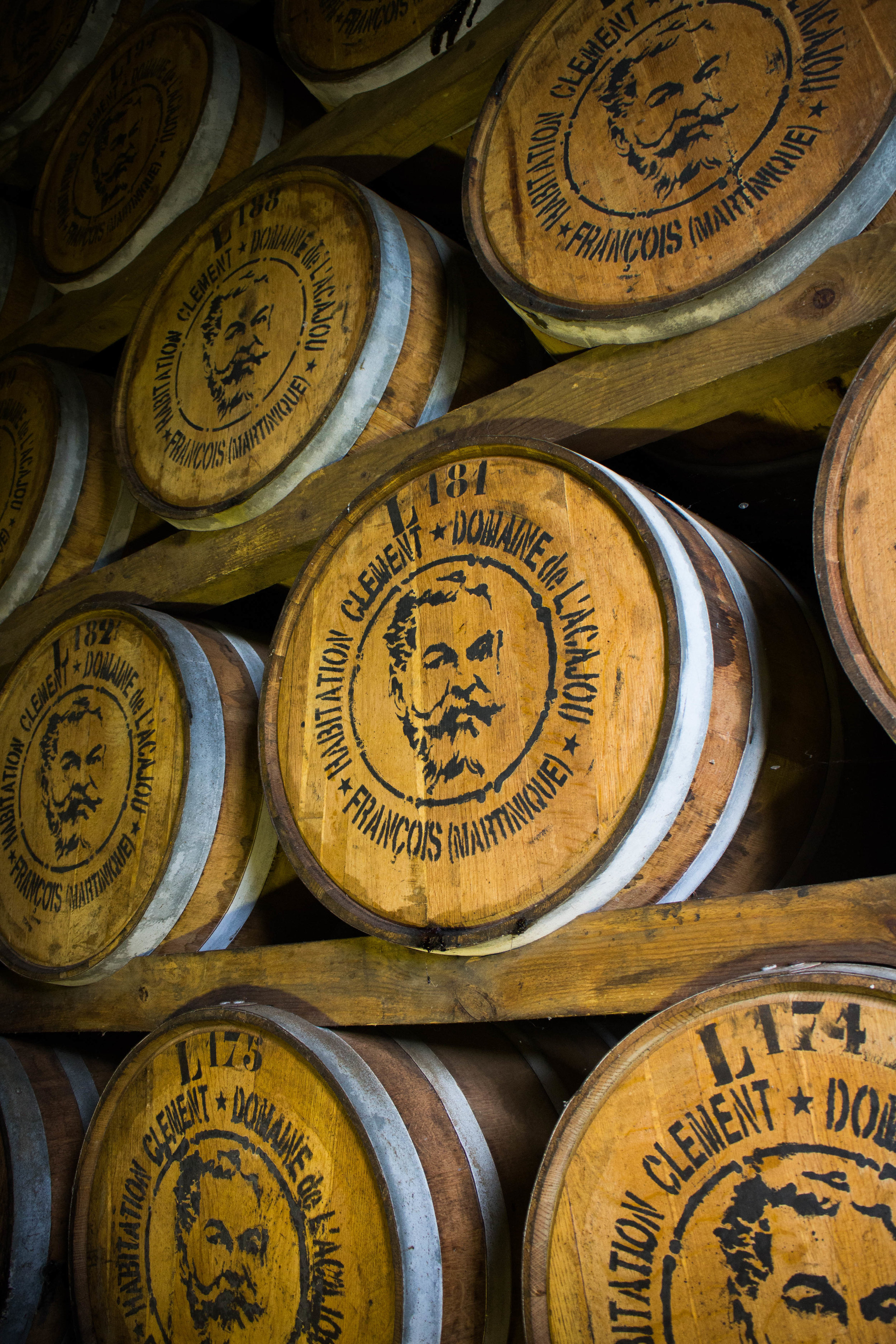
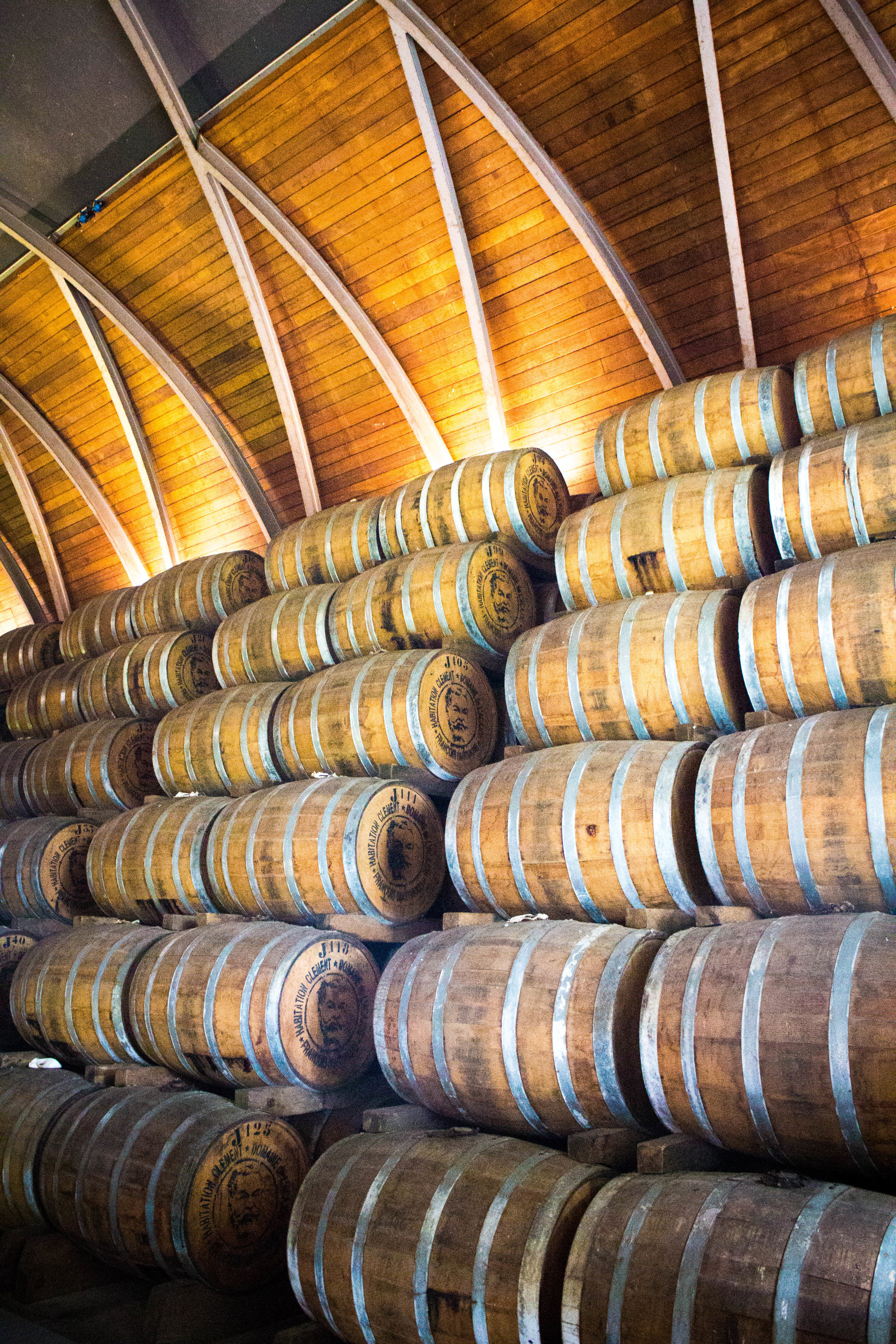
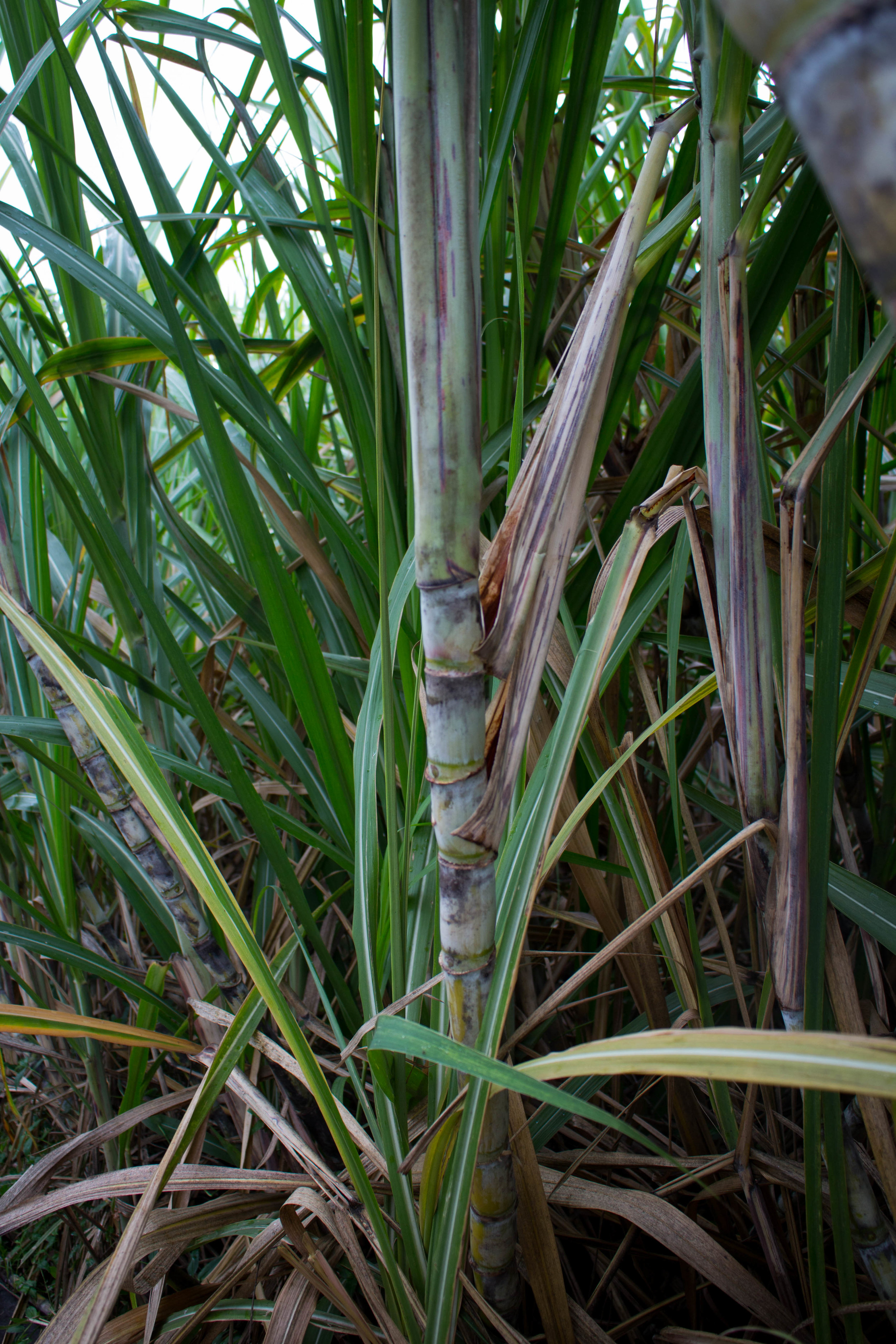

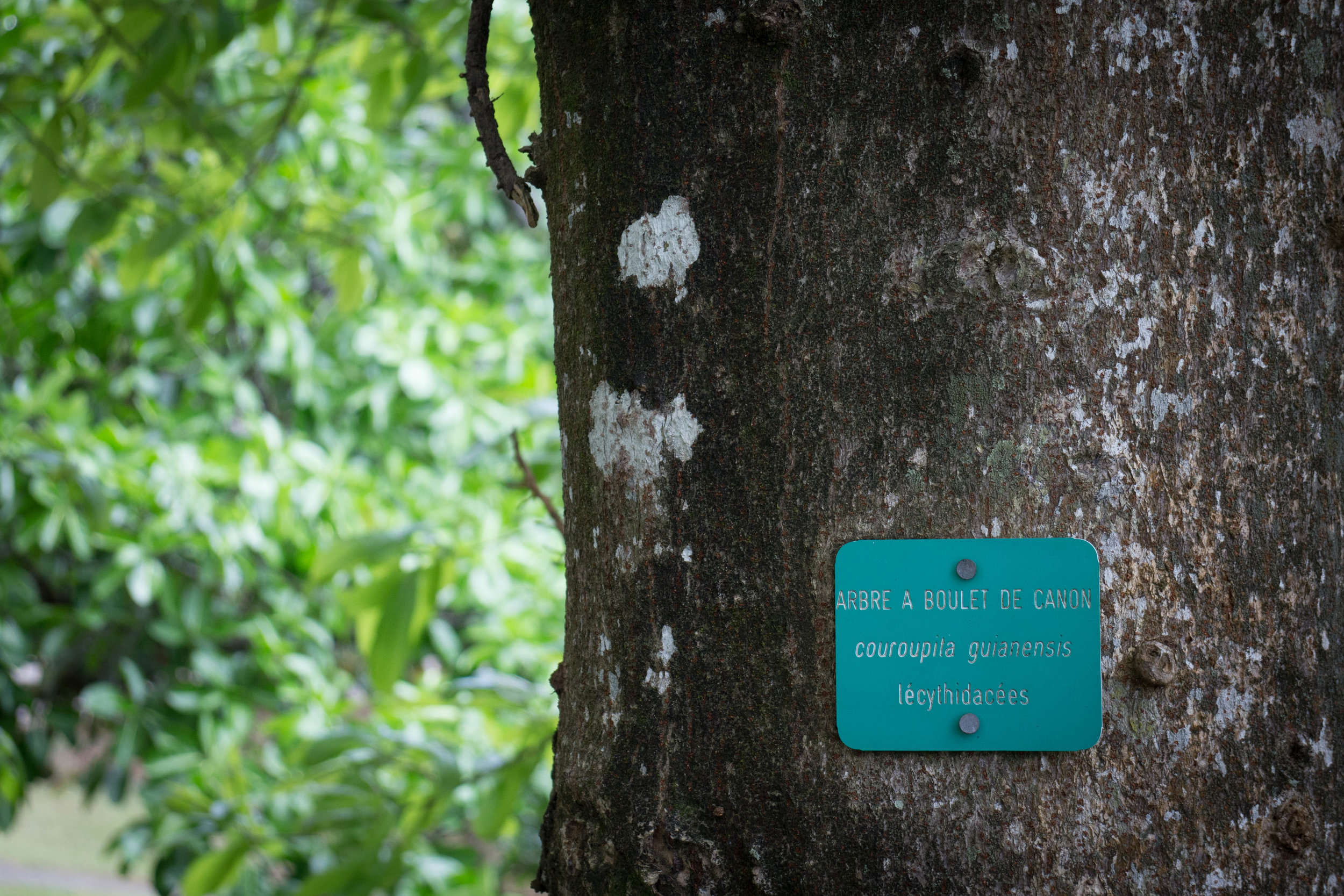
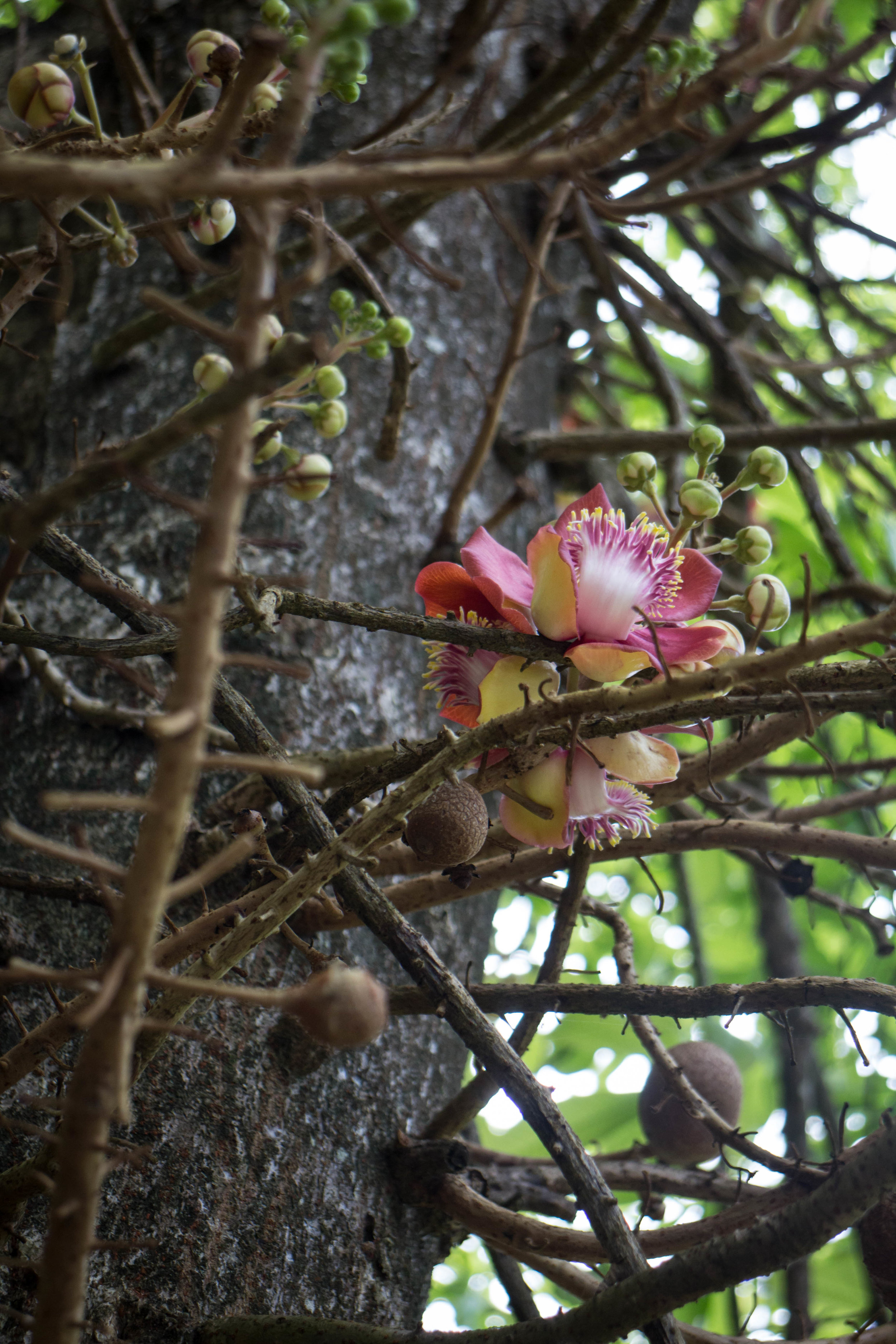
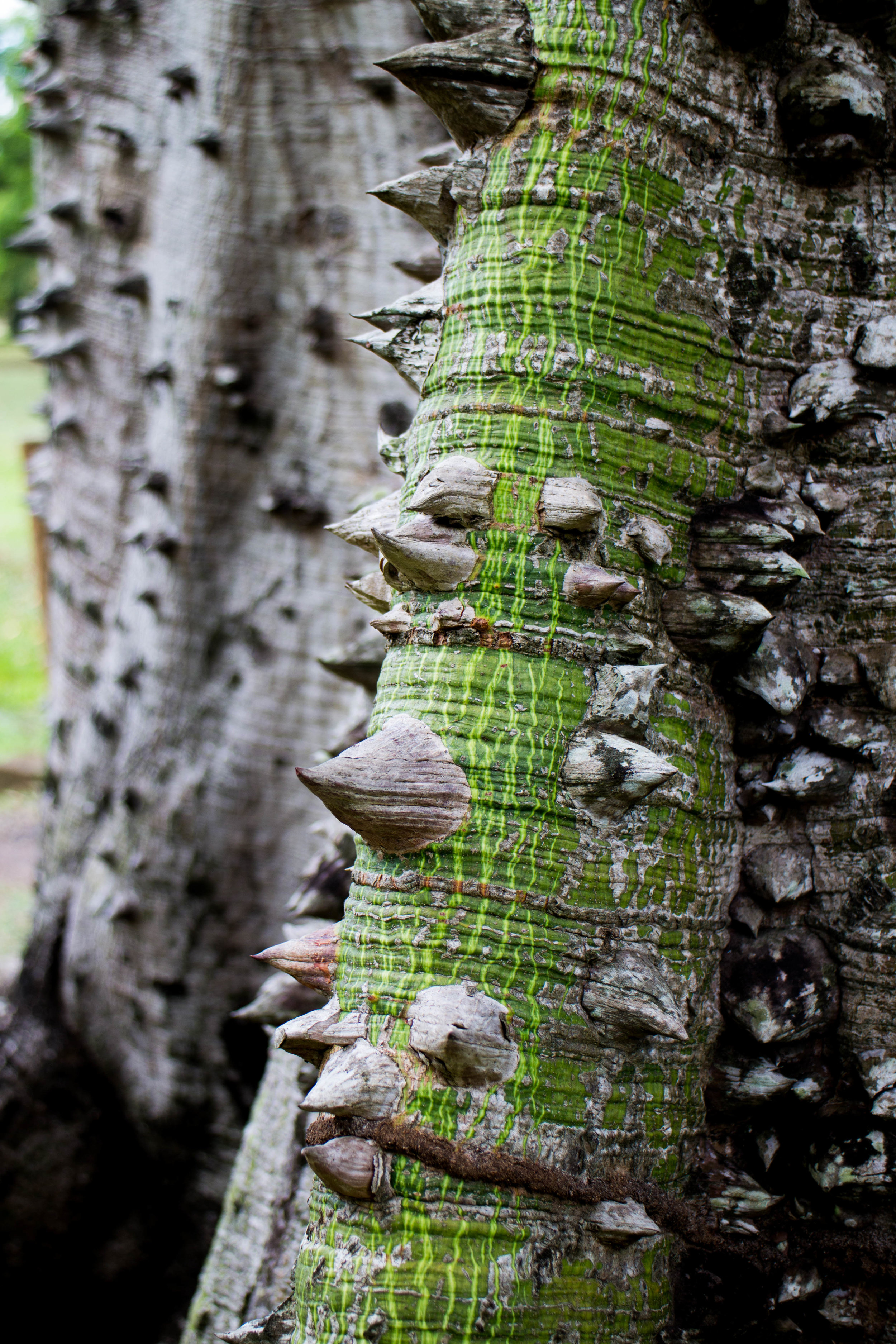
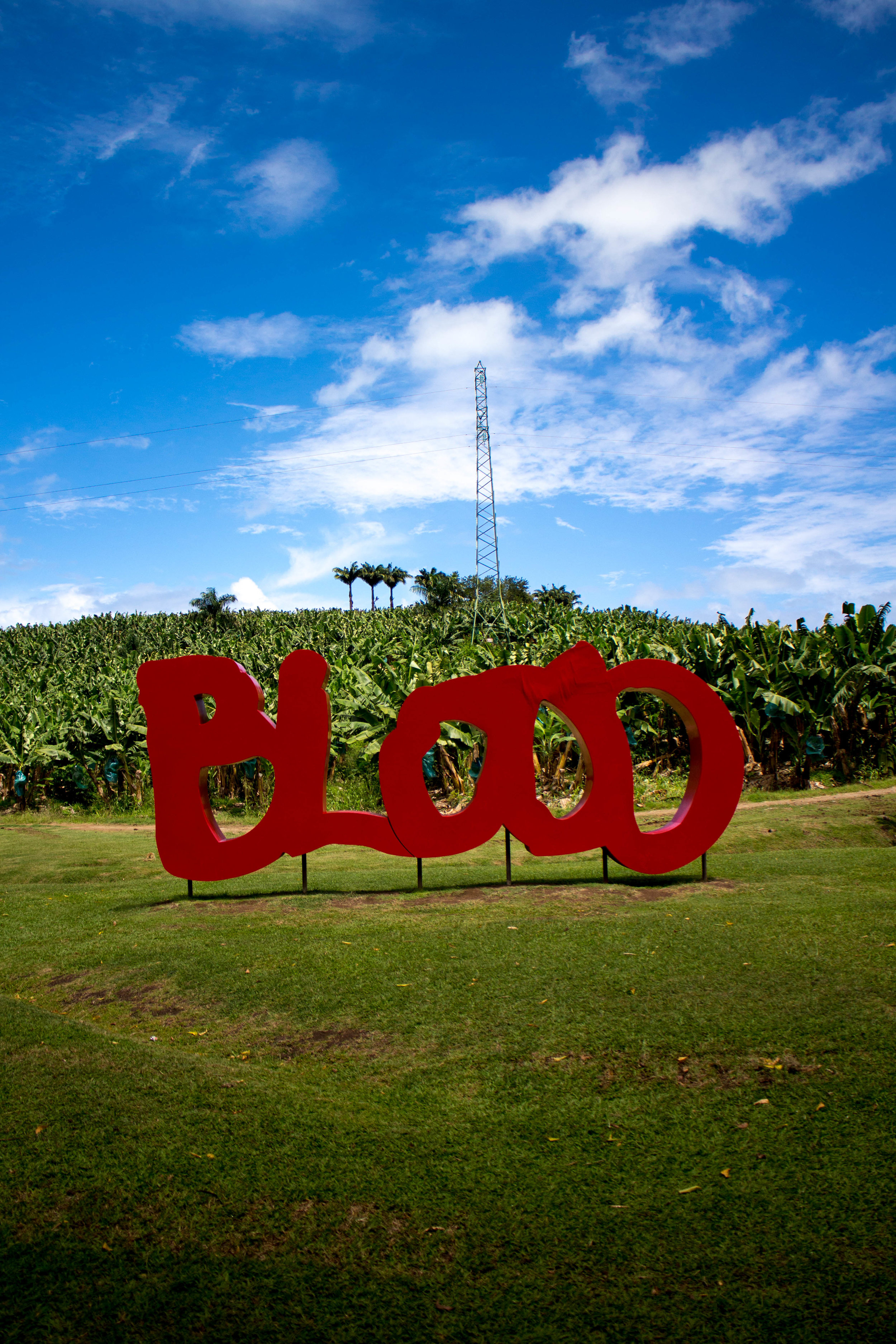
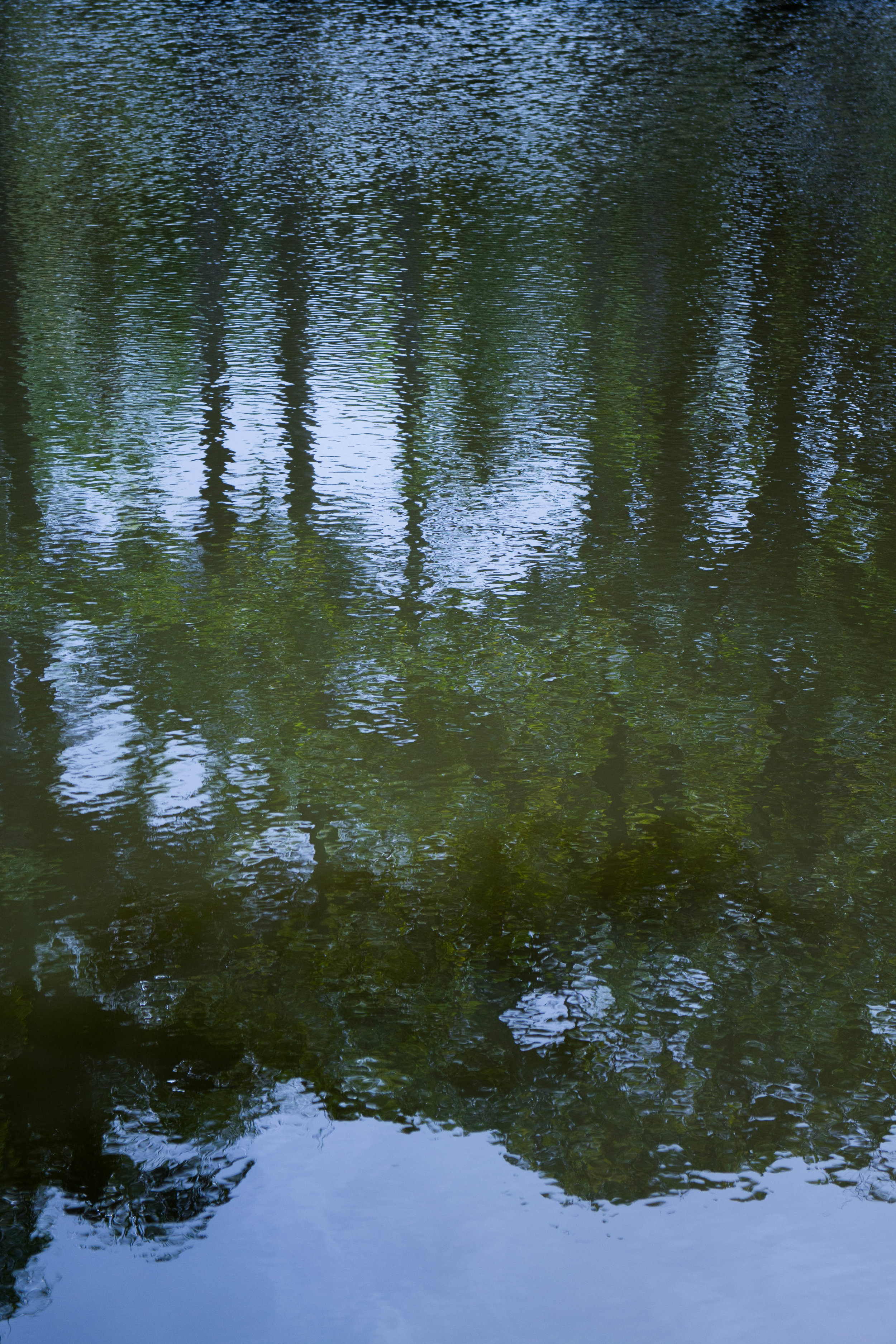
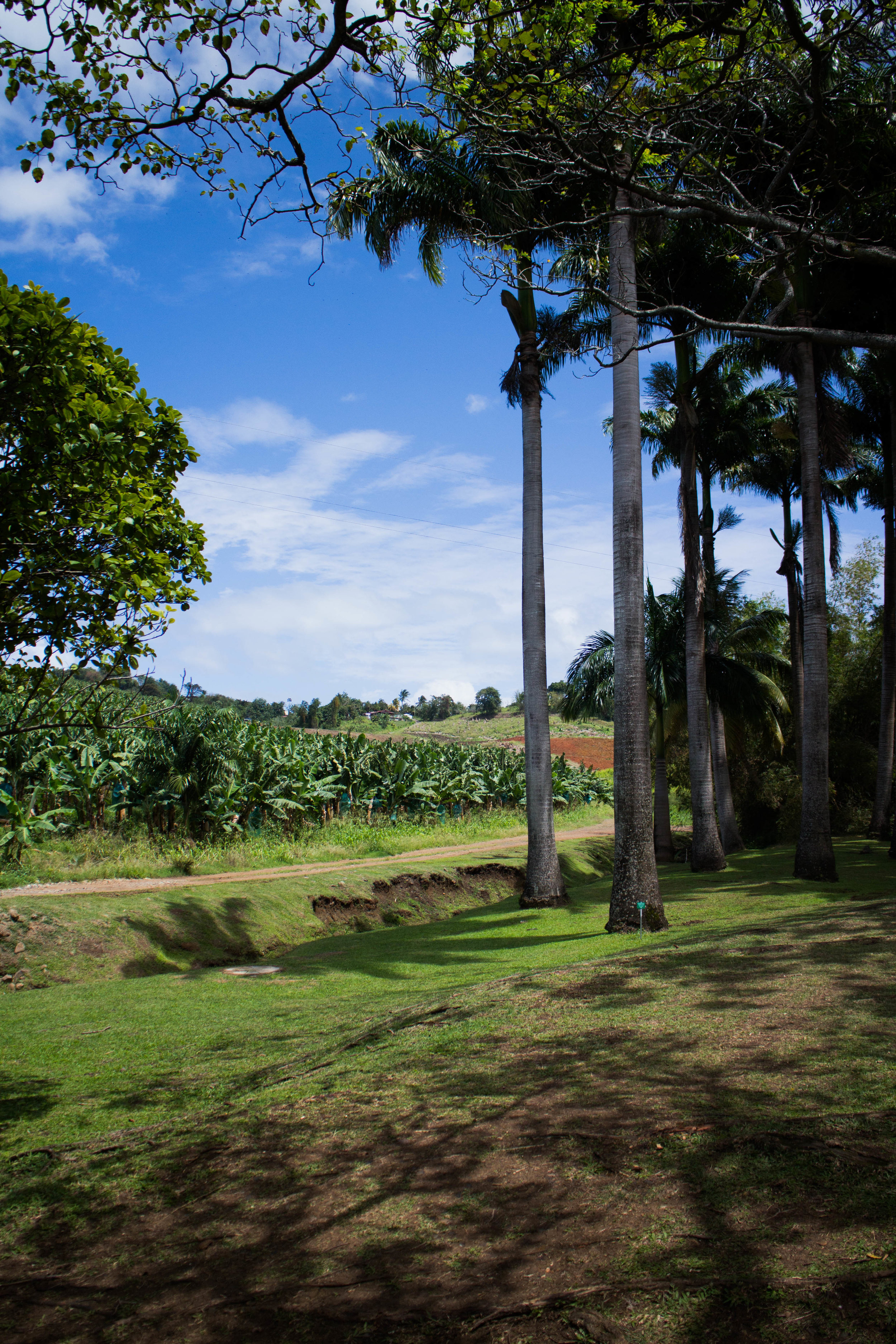
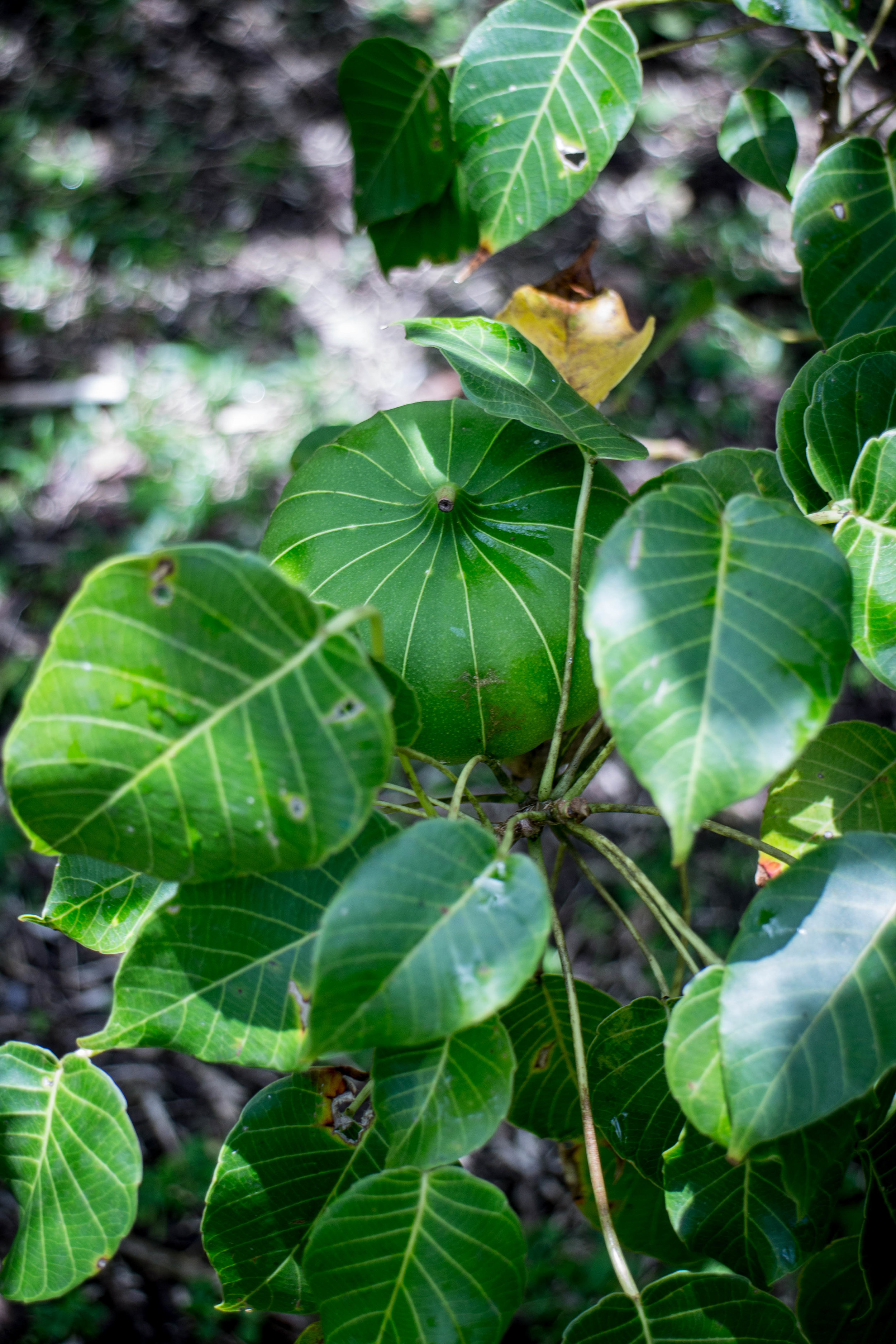
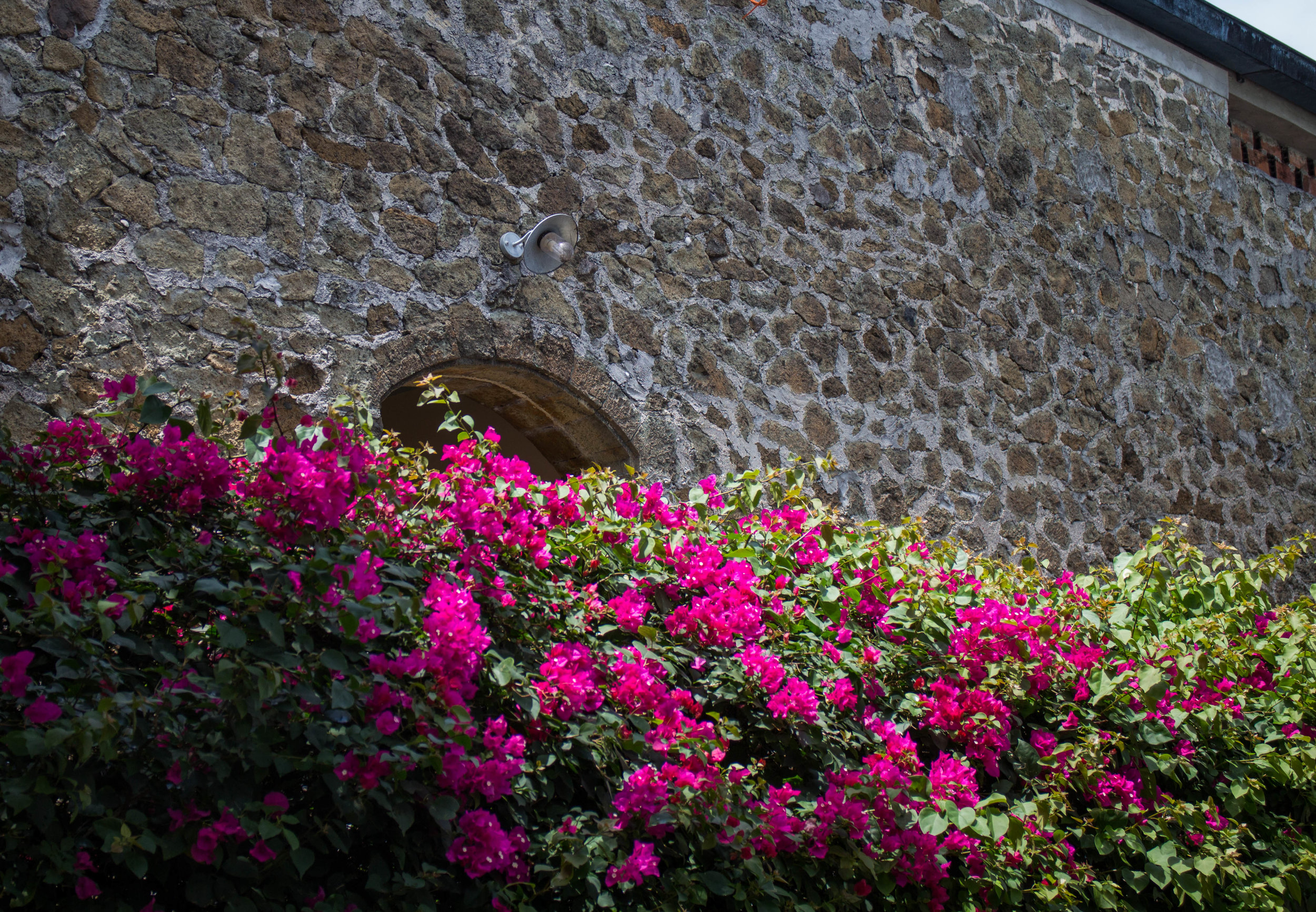
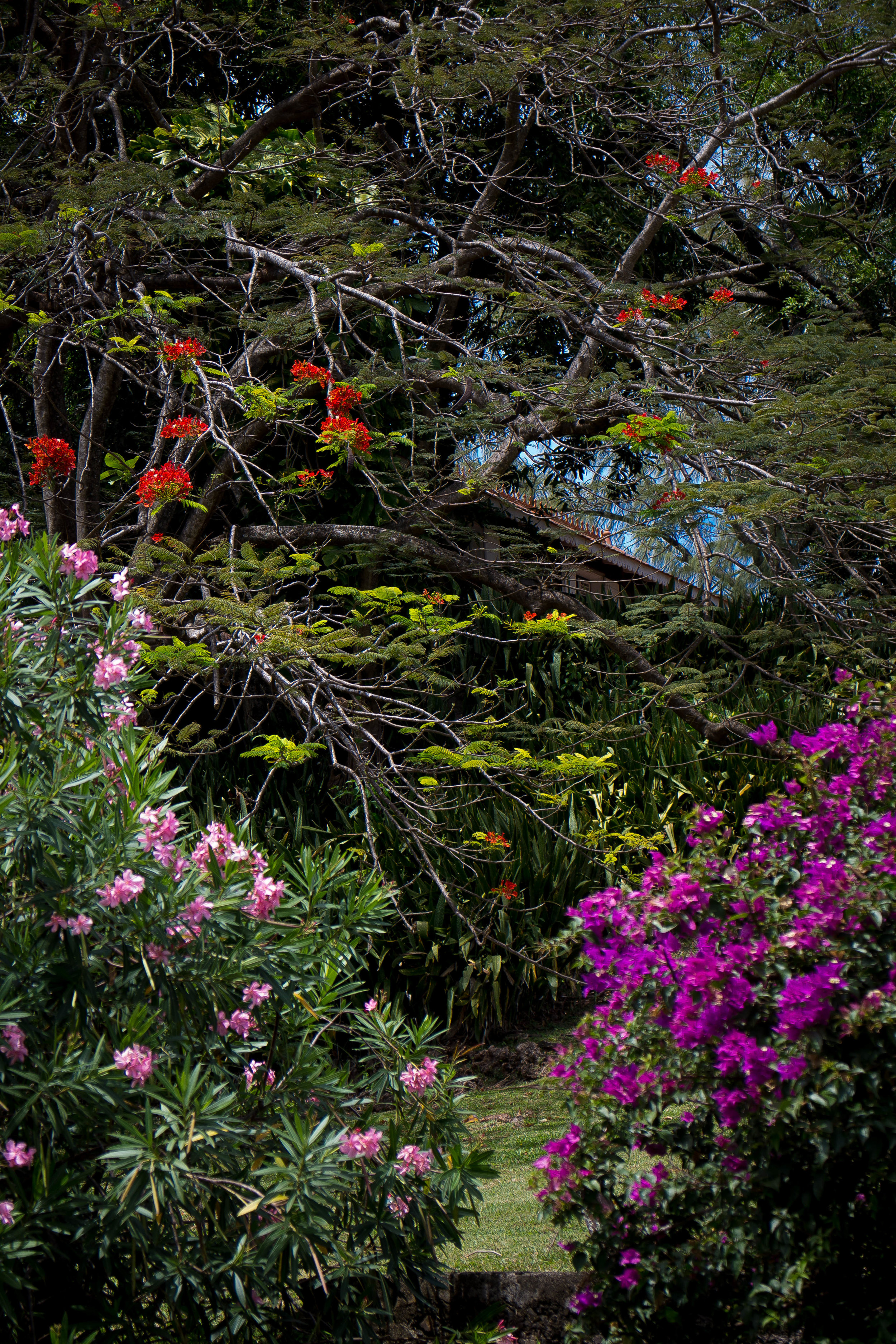
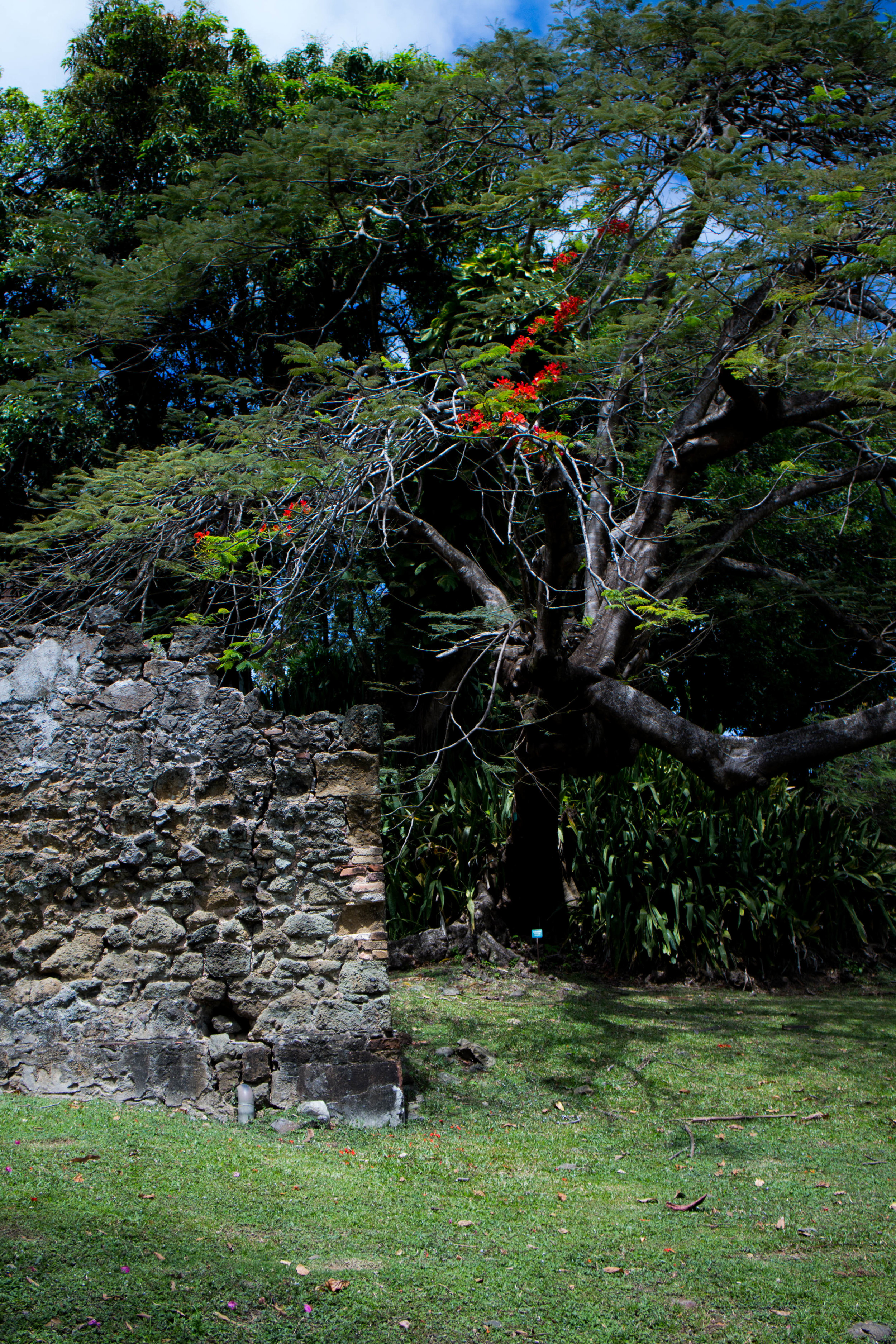
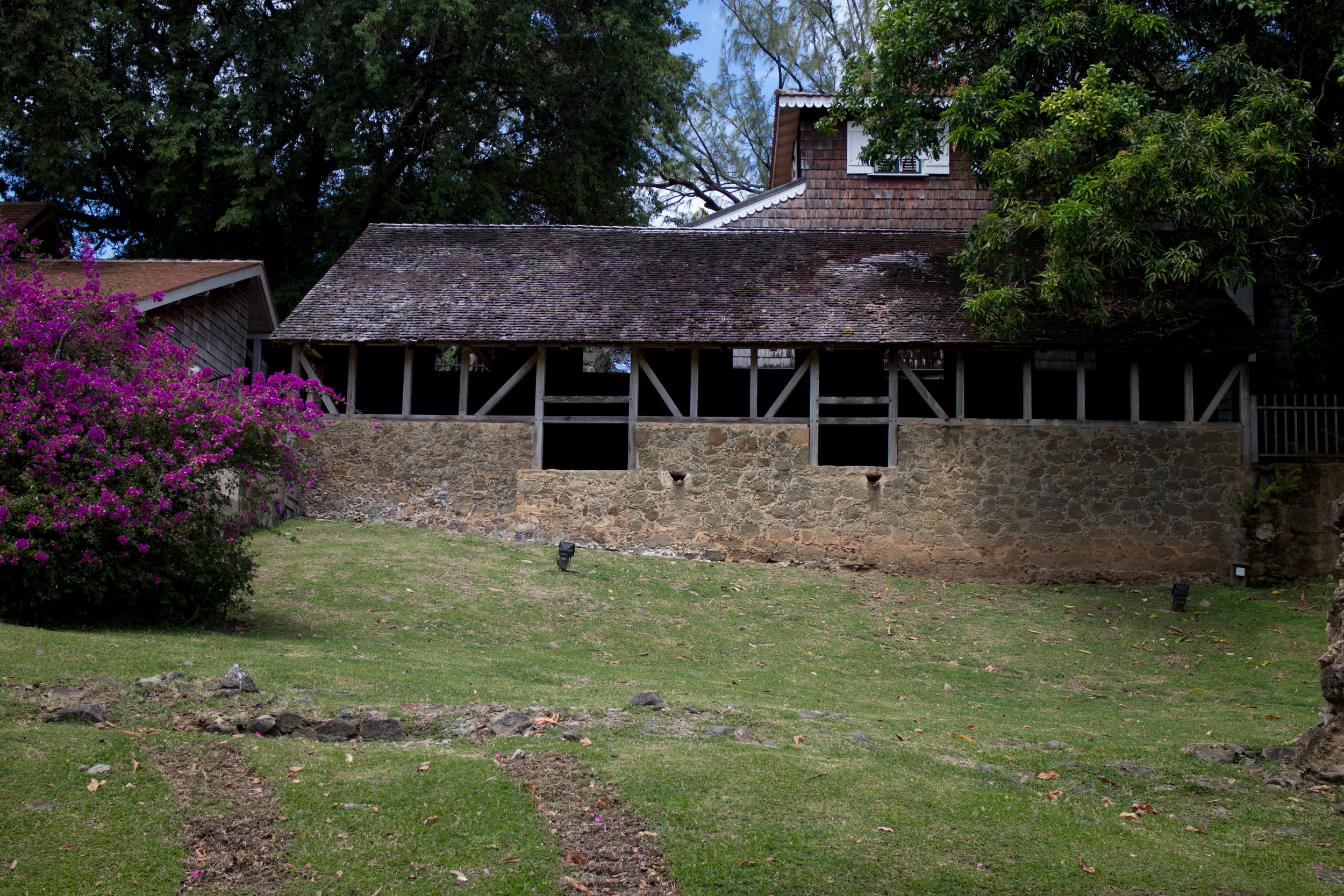
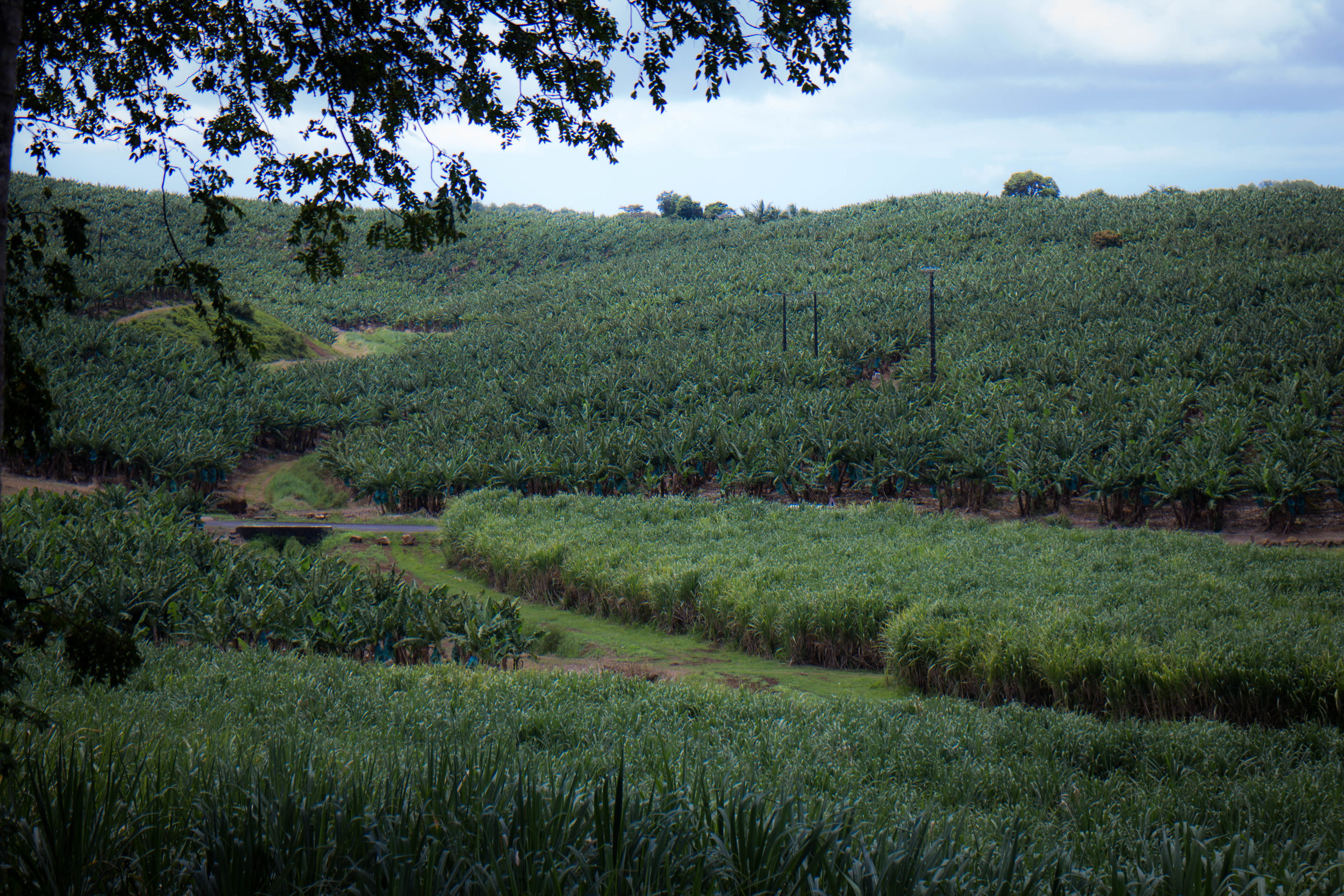
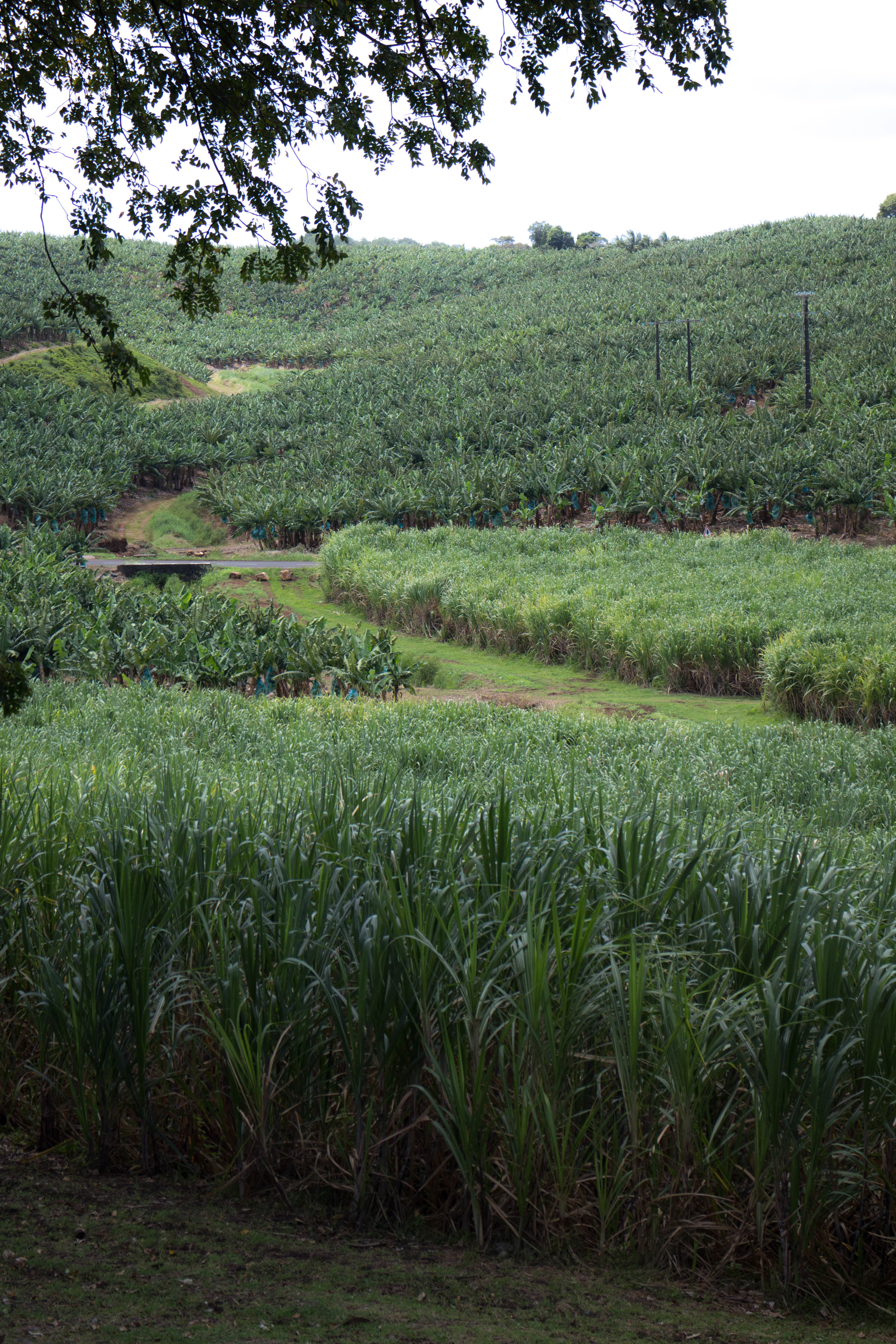

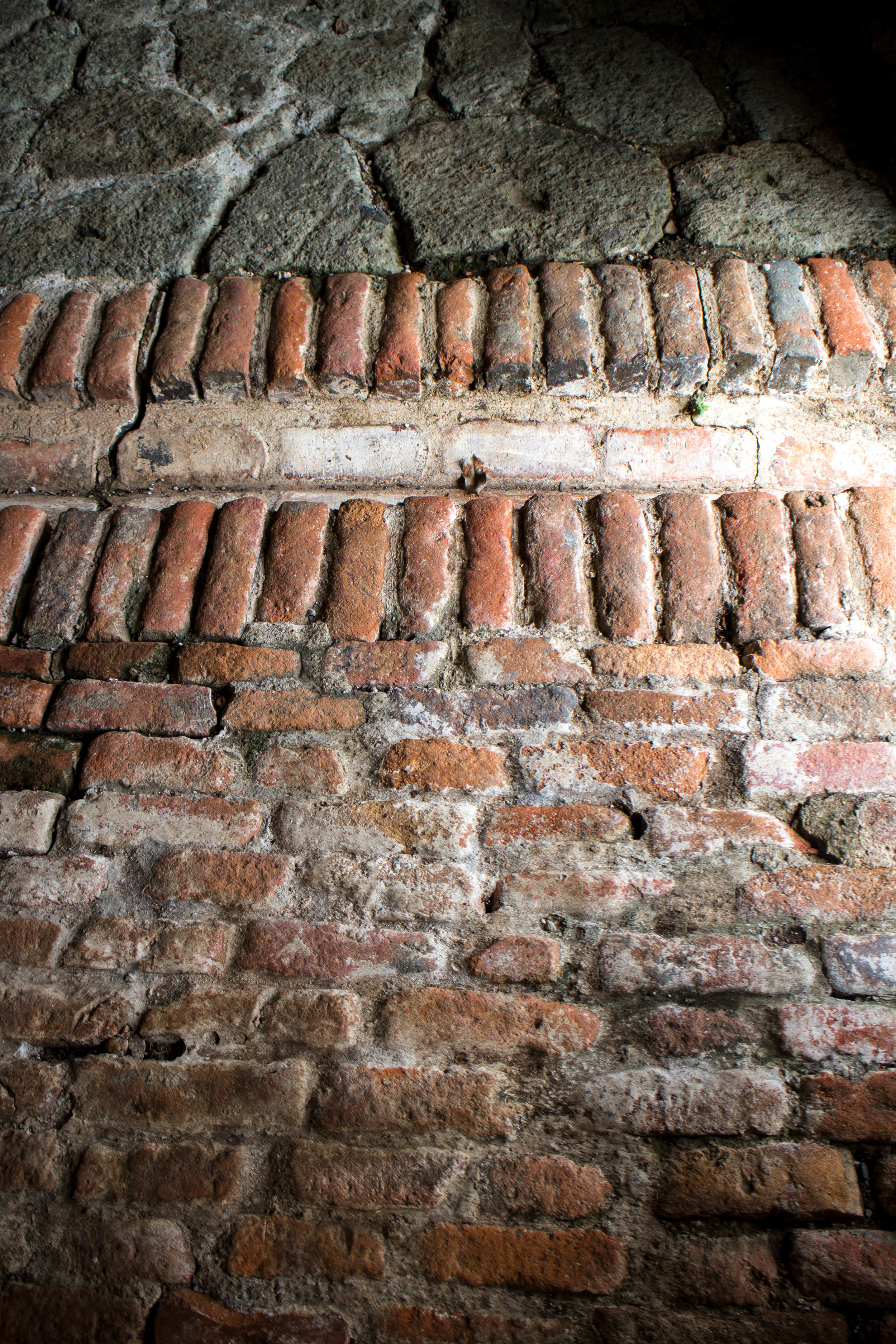
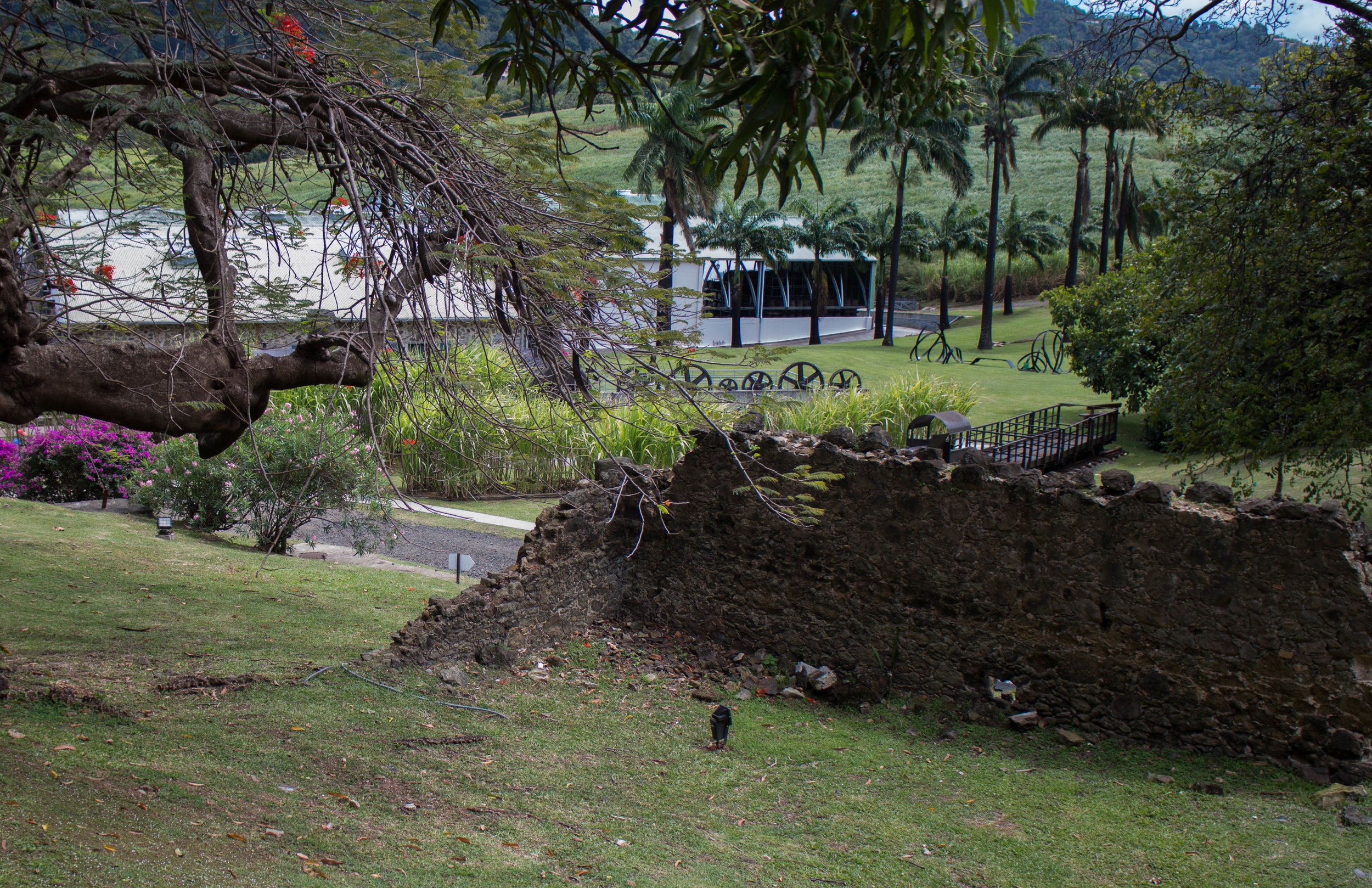
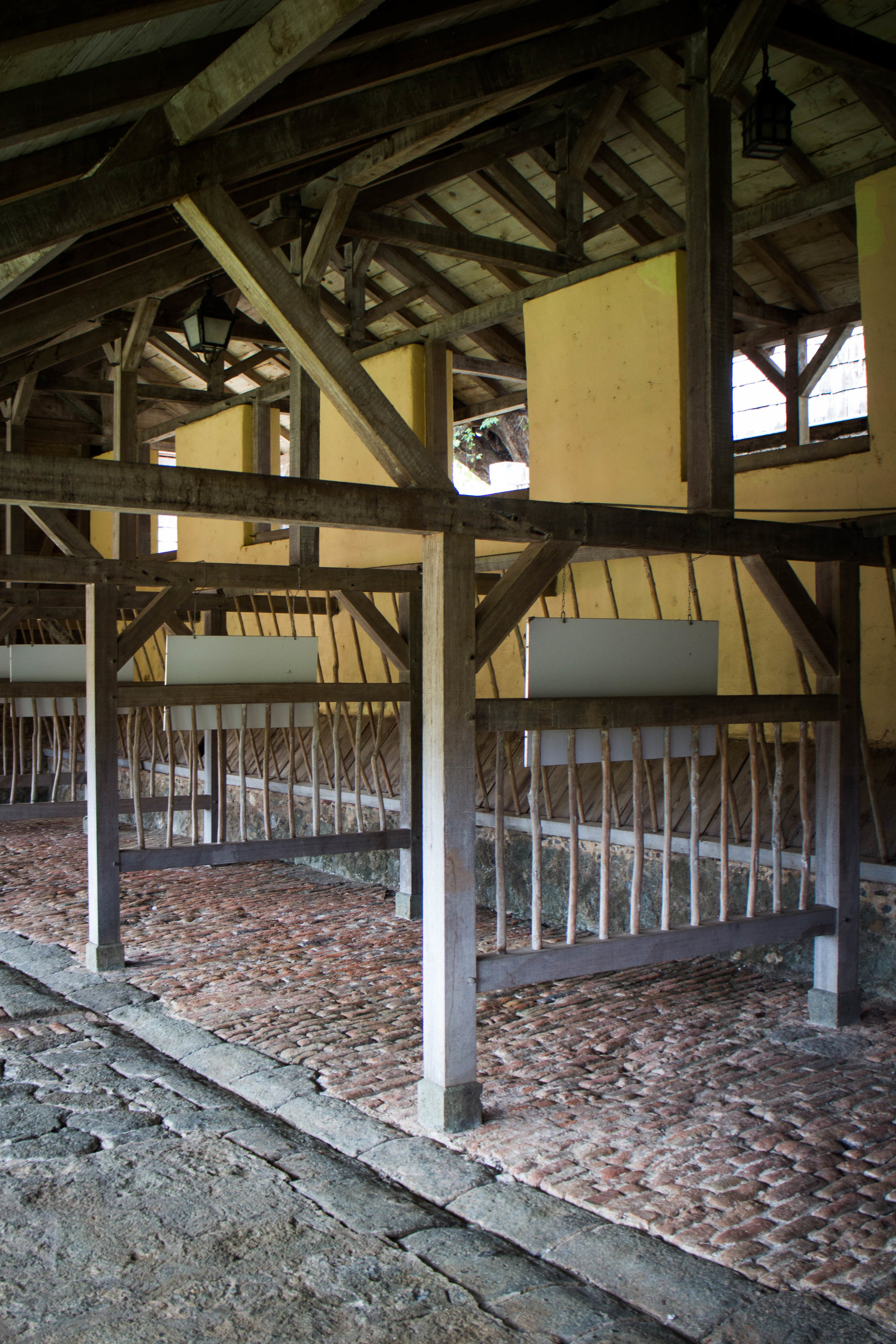
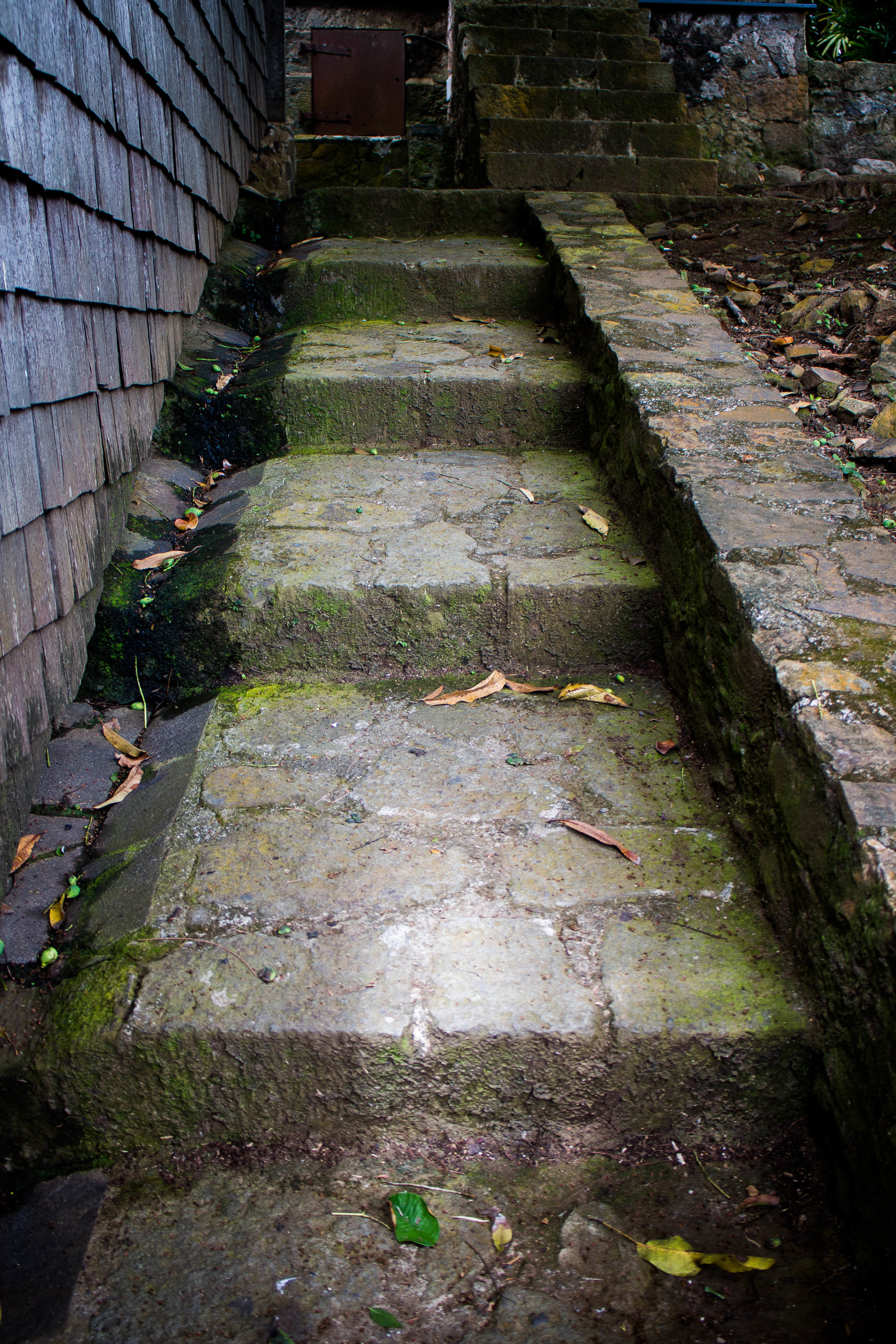
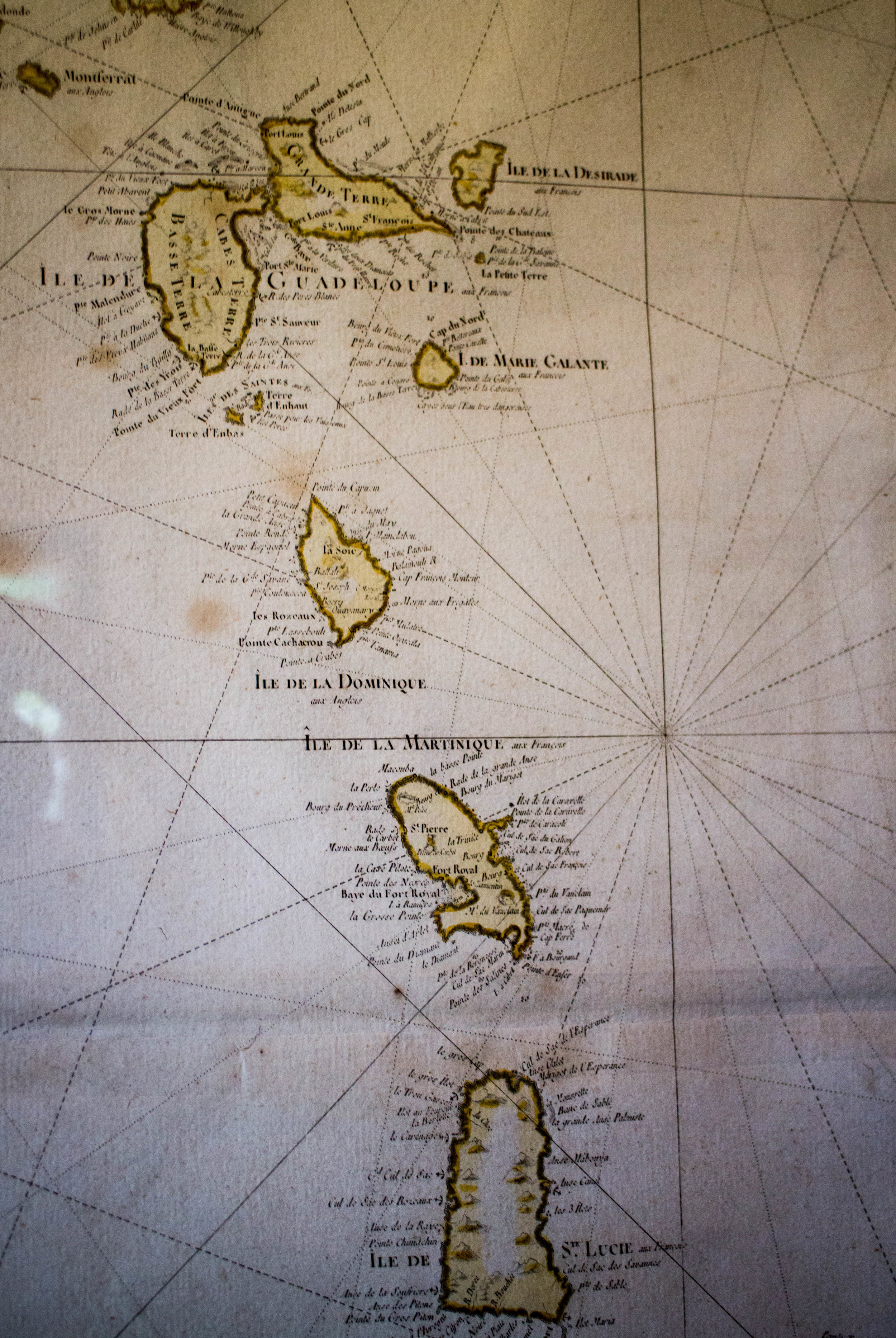
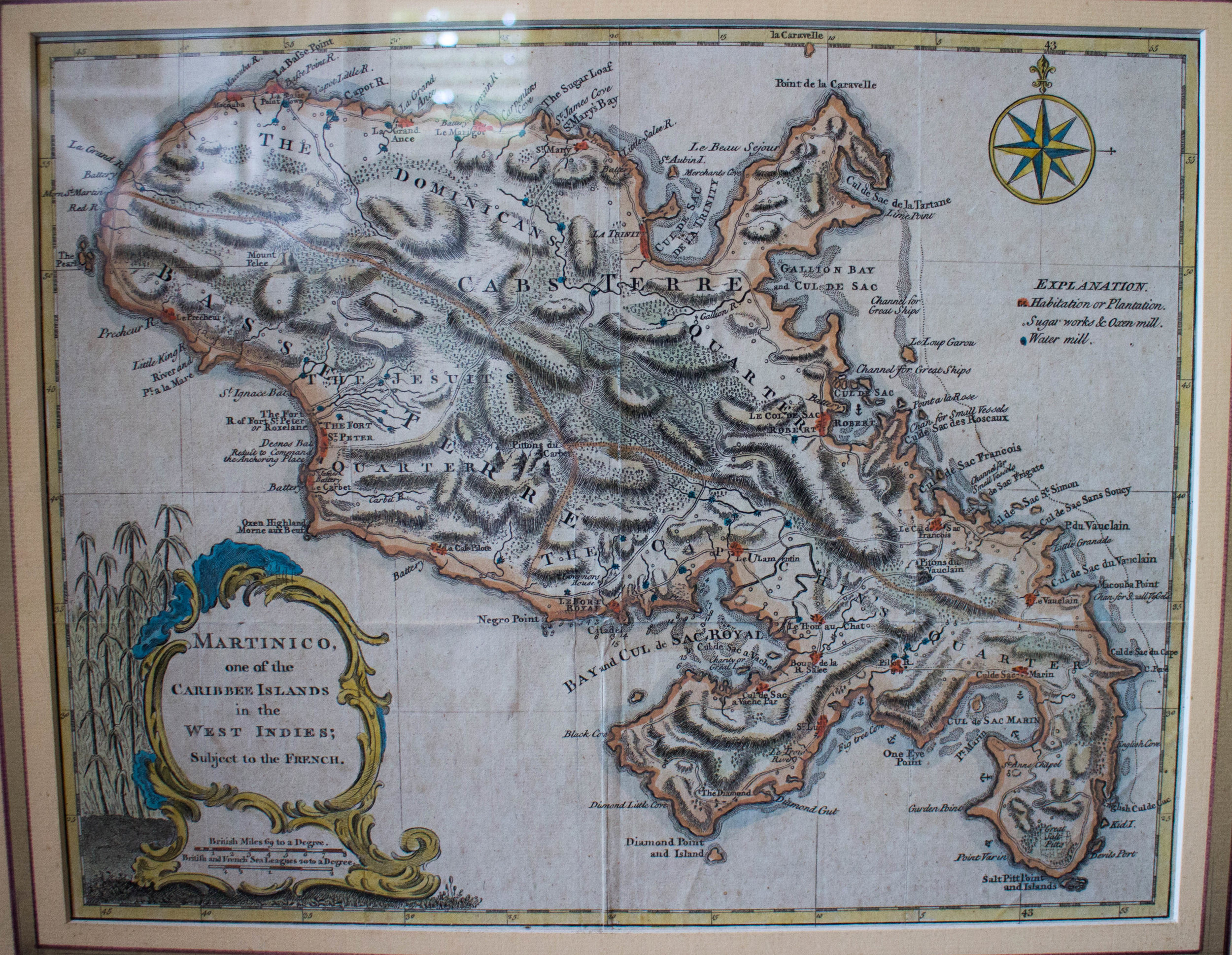
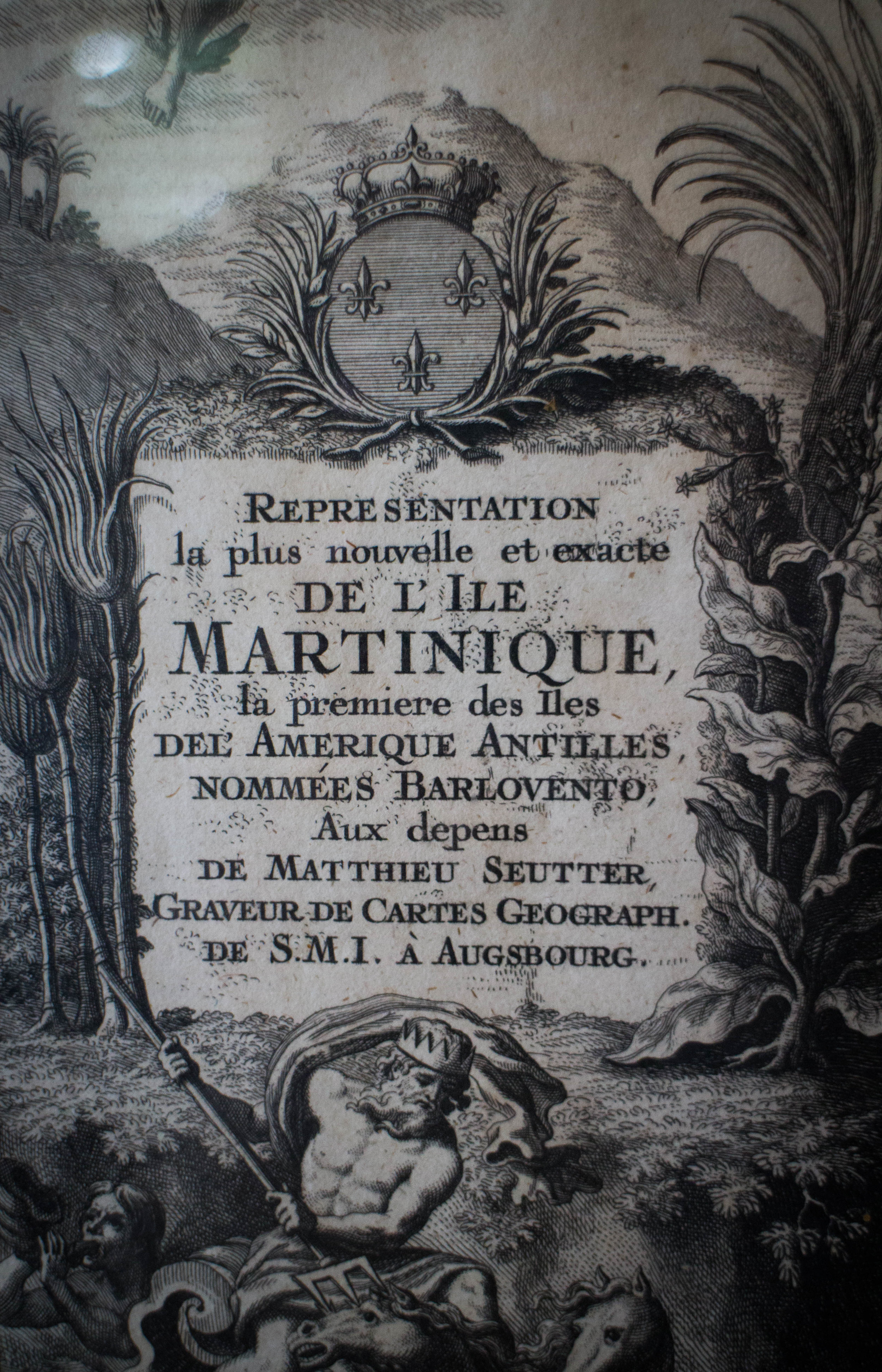
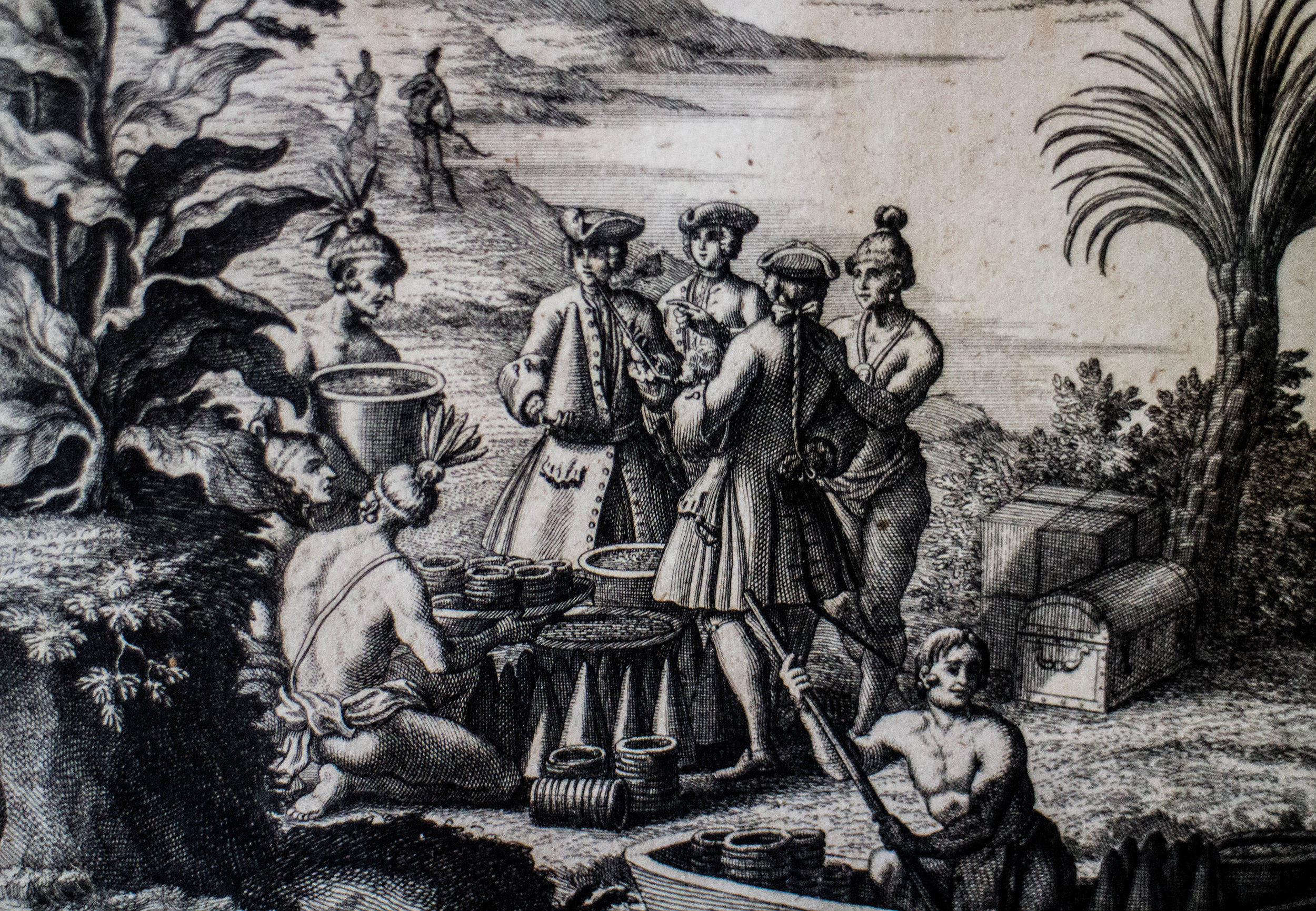
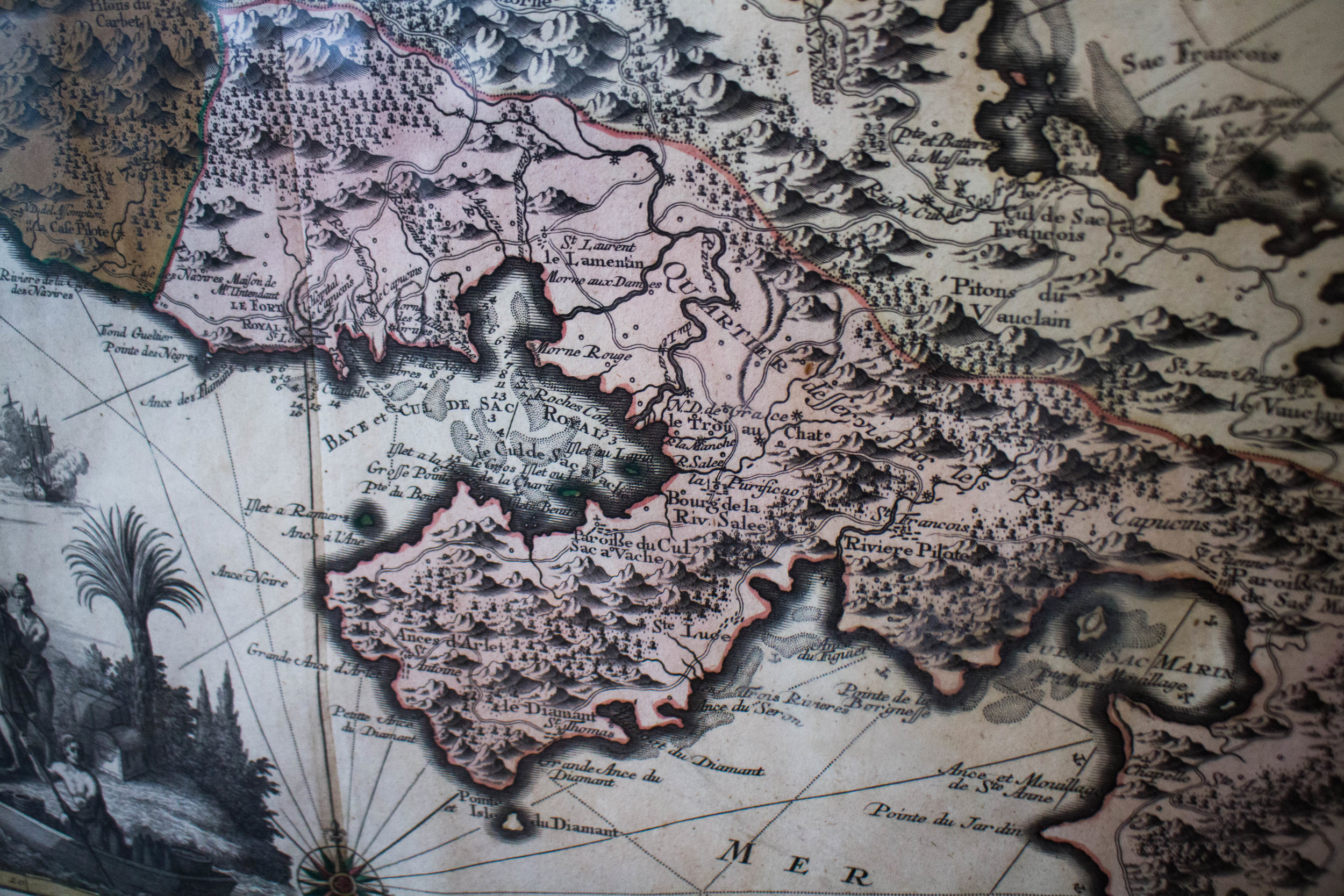
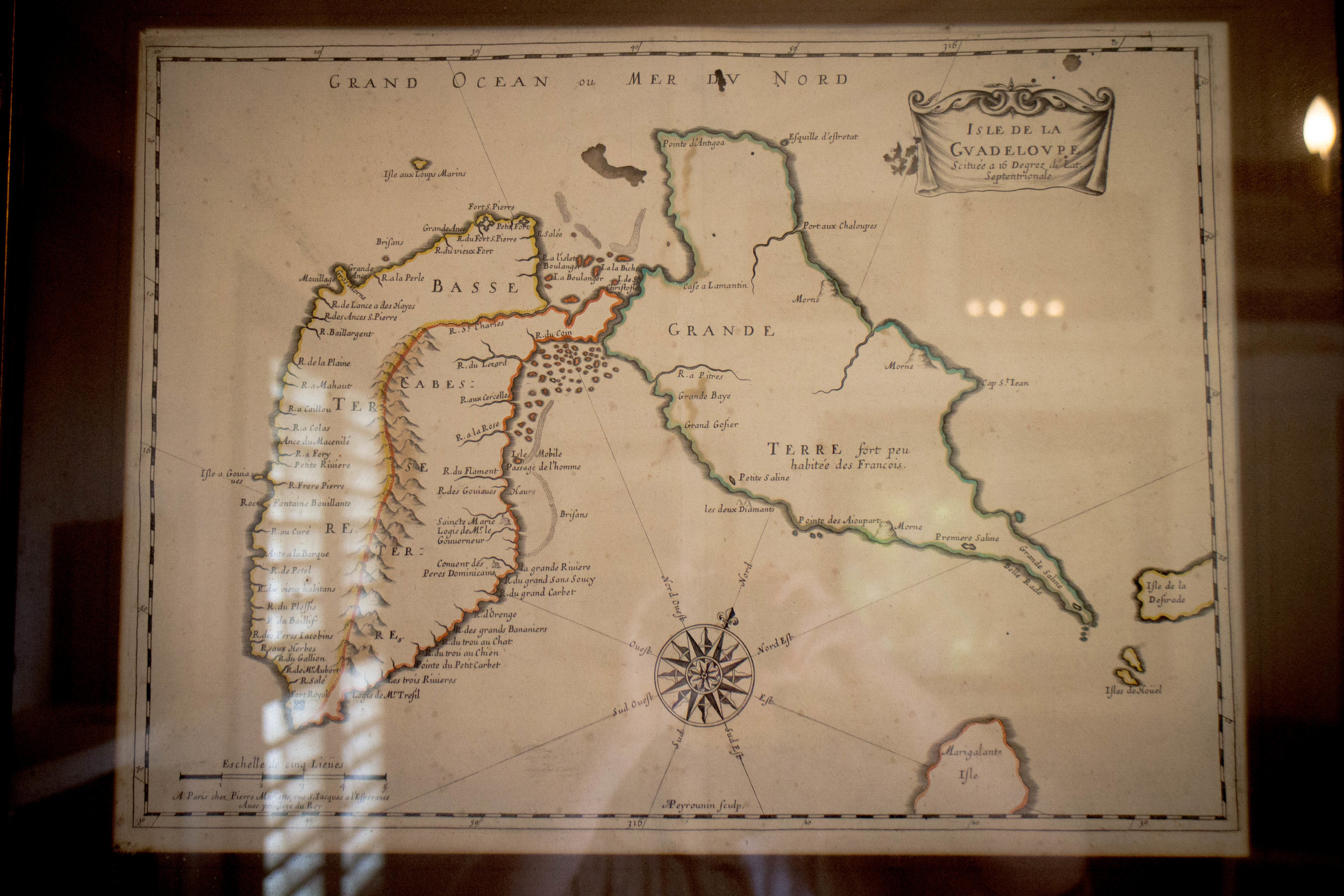
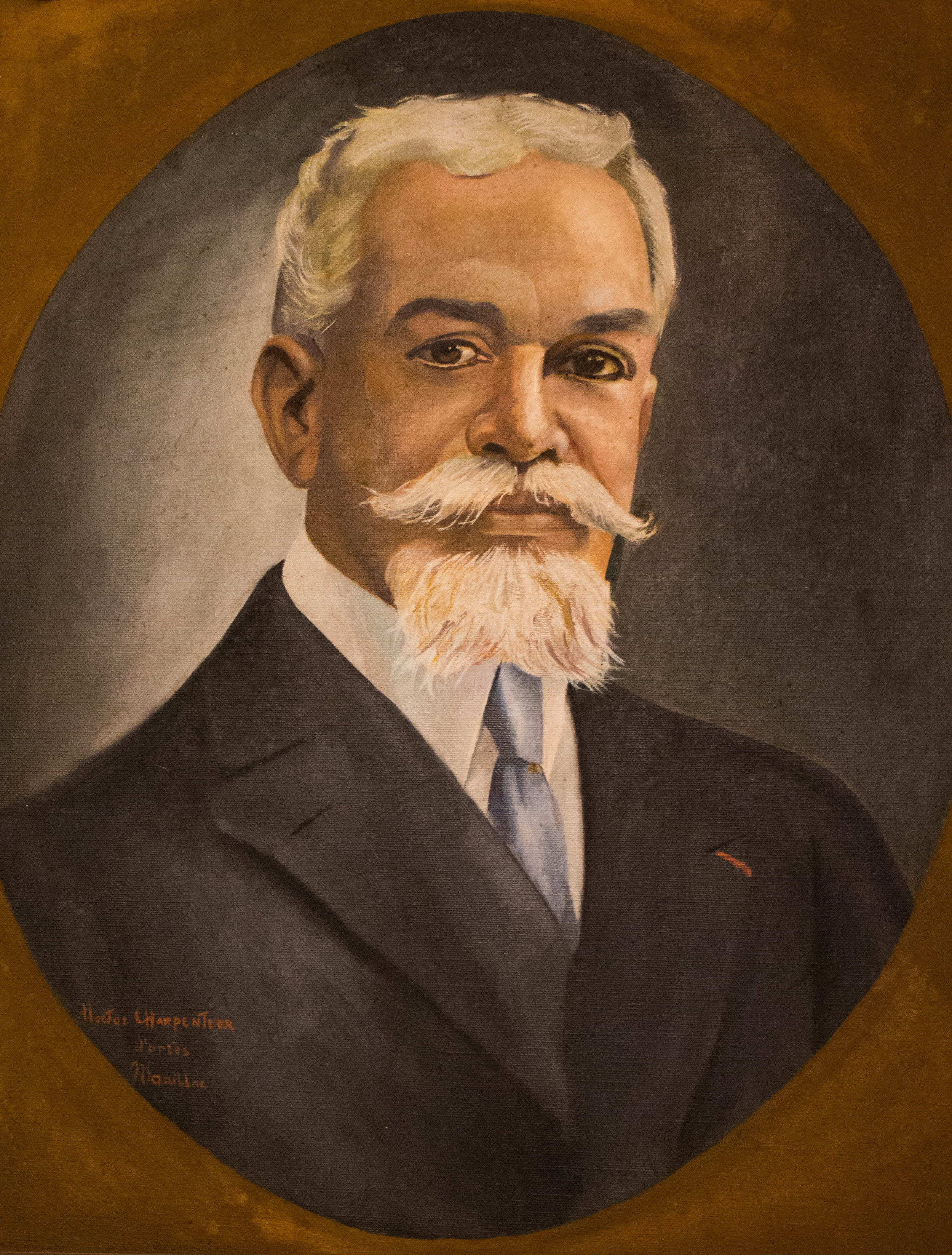
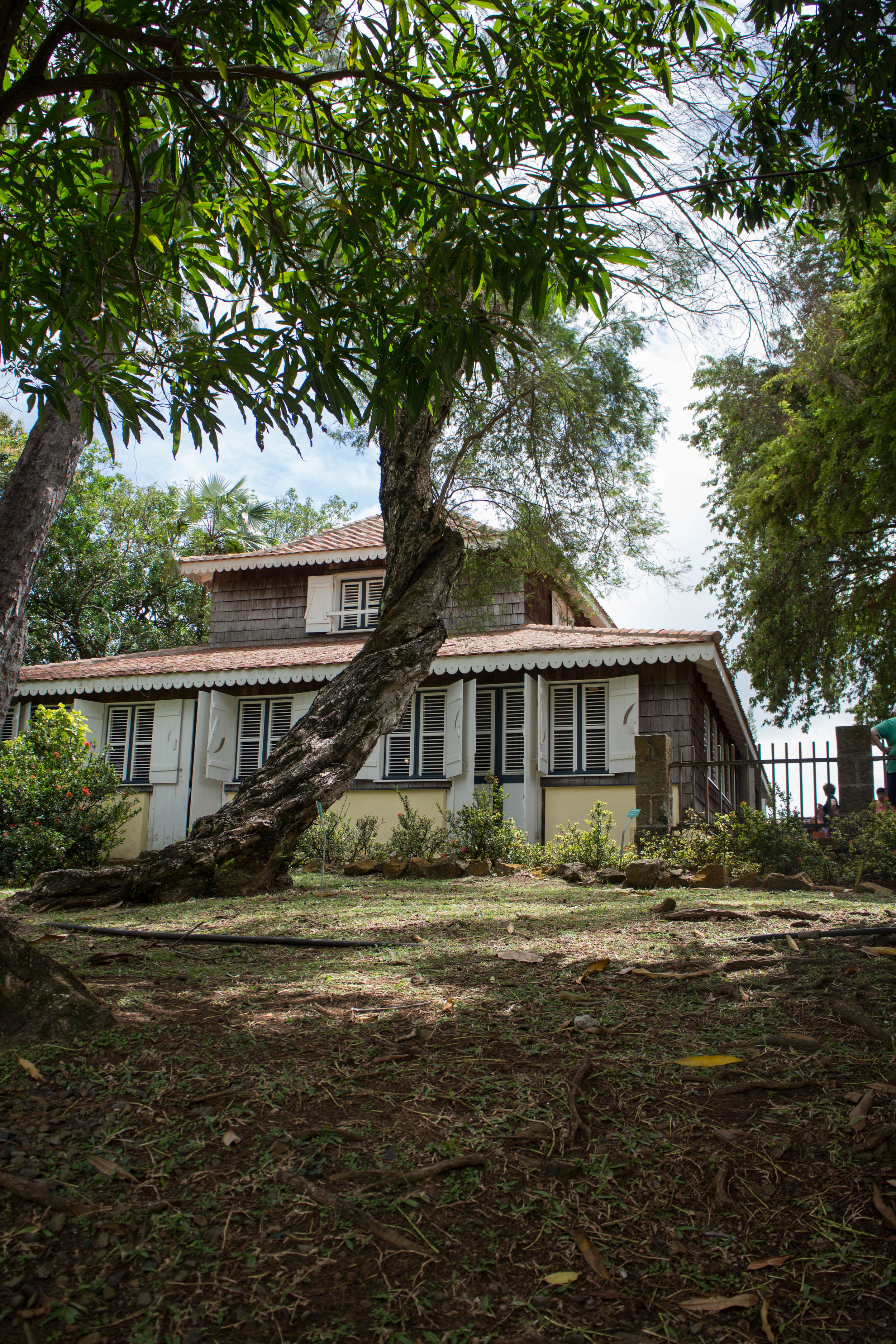
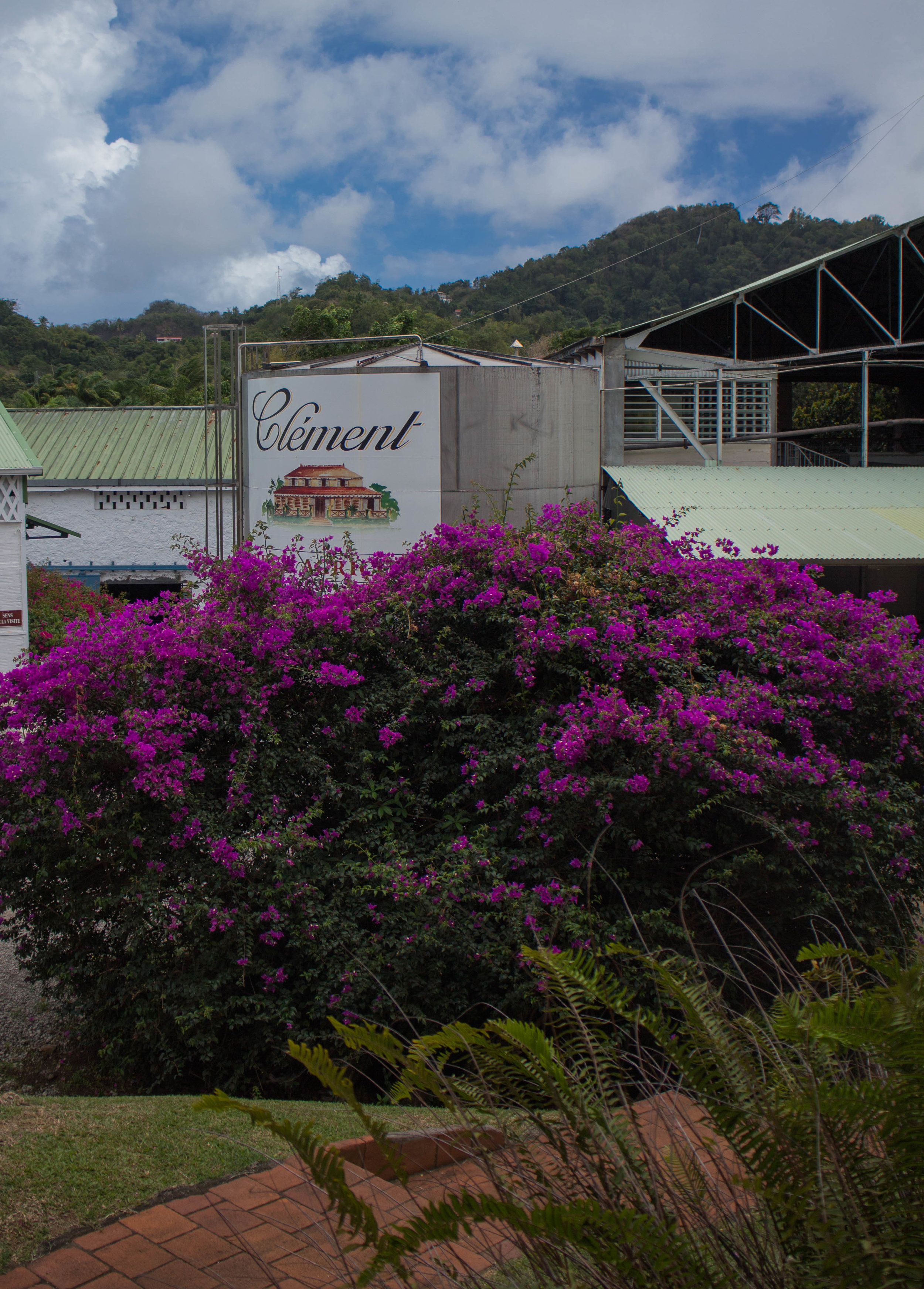
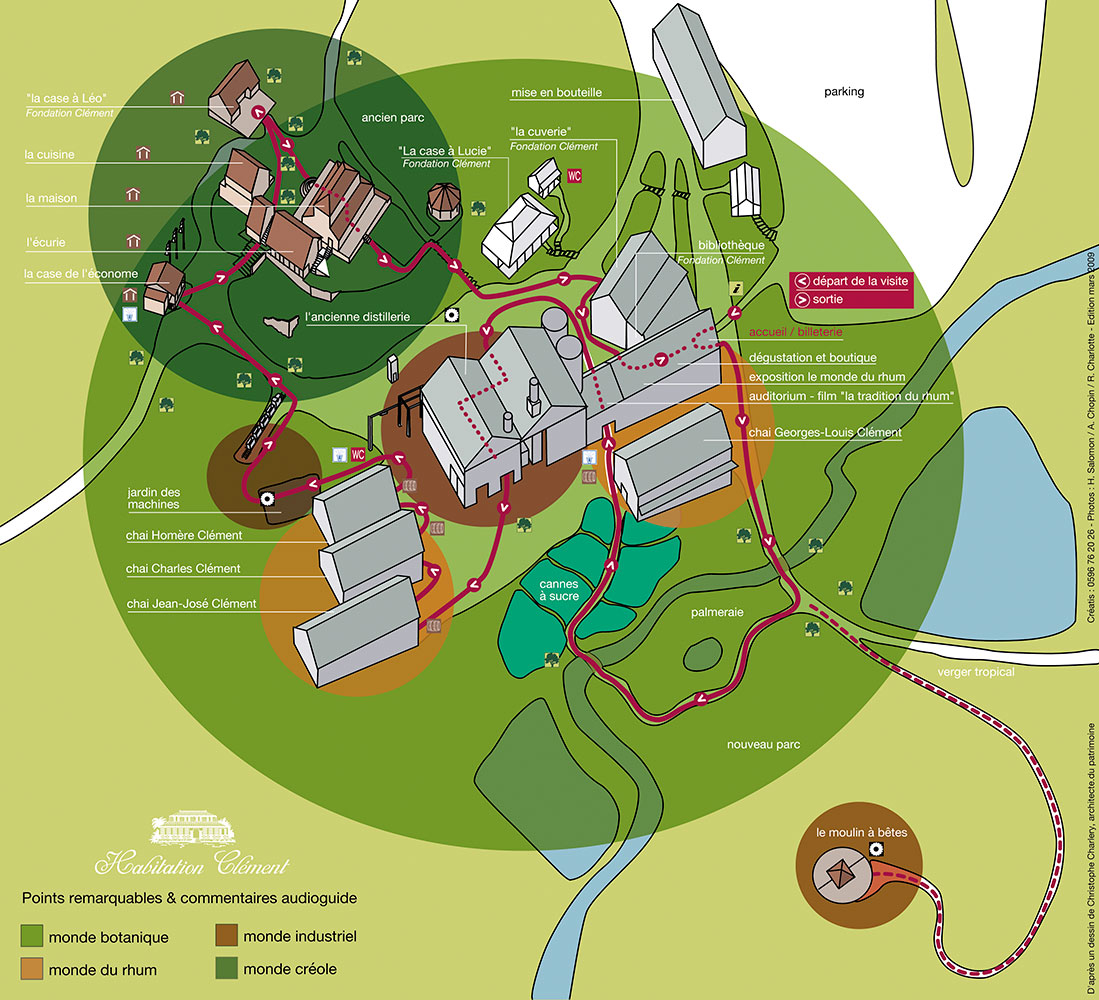

Fondation Clément, an art gallery at the historic Habitation Clément, was opened in 2016 with a mission to celebrate the rich art traditions of the Caribbean. The building's shiny metal exterior is a stylish and stark contrast to the lush tropical landscape and other very traditional building and style elements on the property.

These tropical ingredients were part of the challenge round for the 2016 Ti' Punch Cup International Cocktail Competition.

This is a cross section of the inside of a copper Creole still. You can see the plates as well as the various condensing caps that collect alcohol vapor as it rises.

After World War II, American trucks gradually replaced ox-carts and railroads as the preferred way to transport cane on Martinique.

The open brickwork lets both light and a breeze into the building.

Note the Shure microphone antennas that were set up for the live broadcast of the Ti' Punch Cup. March 2016.

This cane is eventually harvested and made into rhum, but it's usually the last to go; most production comes from other cane fields and this cane is planted for the dual purpose of having useable sugarcane and creating a beautiful vista for visitors to the habitation.

Rhum has not been distilled at Habitation Clément since 1989, but all aging happens here. Clément uses a dual cellar aging system, similar in structure to the Cognac system. These barrels are in the Martinician equivalent of a "dry" cellar or warehouse, meaning that the warehouse is not temperature controlled. Dry is somewhat of a misnomer in this case, however, because while the temperatures on the island are quite hot, it is also extremely humid.

These barrels are in one of the "humid" cellars, in contrast to the dry cellar photos shown prior. These cellars are dug several steps into the ground, built with very thick stone walls, and temperature and humidity are controlled. Note the evidence of humidity on the barrels, quite different from the honeyed light color of the barrels in the dry cellar.
Master Blender Robert Peronet is able to elicit very specific characteristics from these individual barrels. The humid, temperature controlled stone cellars produce rums that are softer, richer and more sweet with lots of fruit and caramel; the contrasting open air dry warehouses produce drier, woodier rums. The art is in blending these two together.

Born July 12, 1852 in Martinique, Homère Clément was a doctor and politican as well as the founder of Rhum Clément. He purchased Domaine de L'Acajou (Habitation Clément) in 1887.

Arbre à boulet de canon, or Cannonball tree, is a deciduous tree in the family Lecythidaceae, which also contains the Brazil and Paradise Nut trees.

On display inside the plantation house at Habitation Clément

Historic map on display in the old plantation house at Habitation Clément. Note the illustration of sugar cane in the bottom left corner.

Illustration depicting European settlers and natives of the Caribbean.